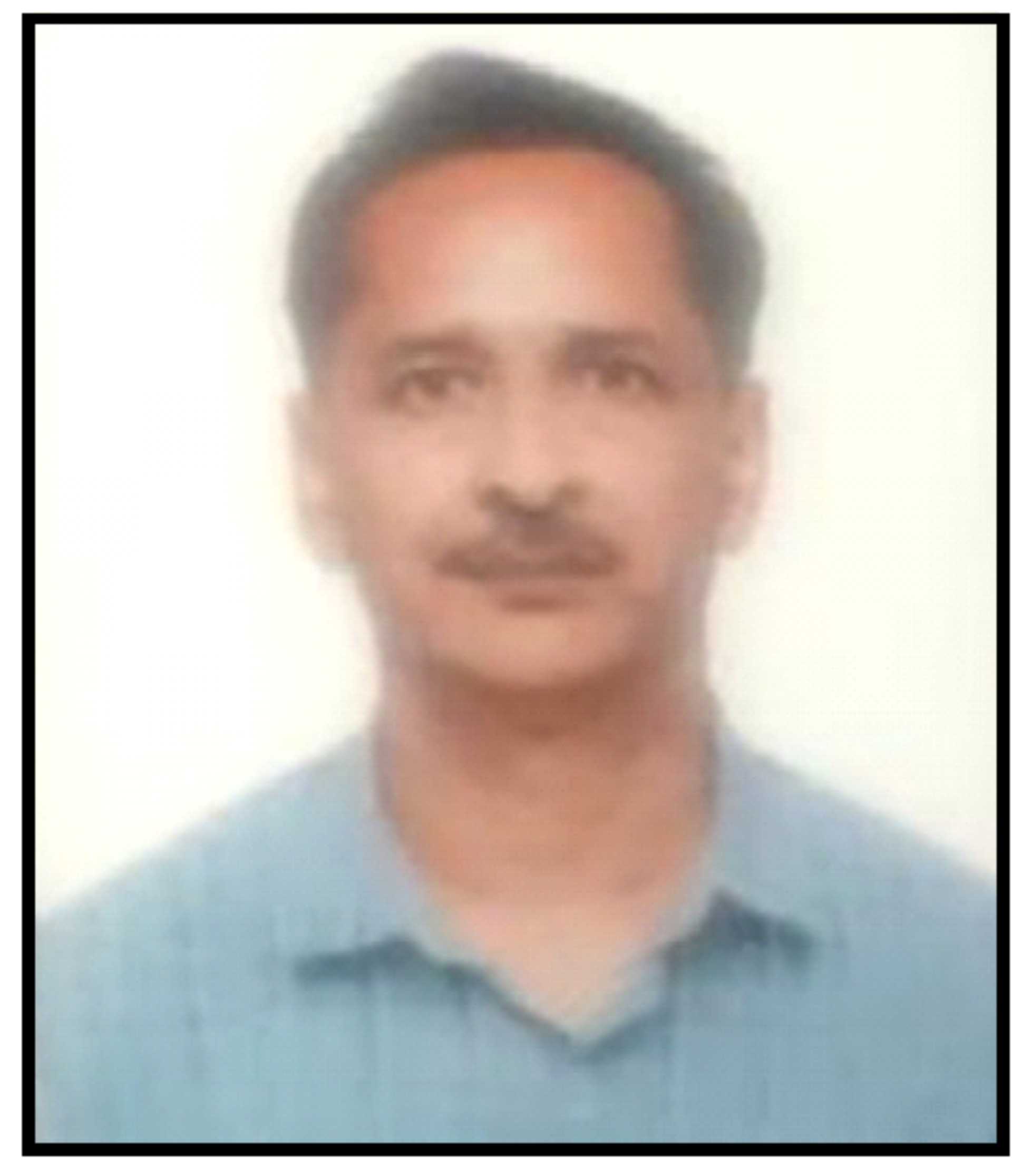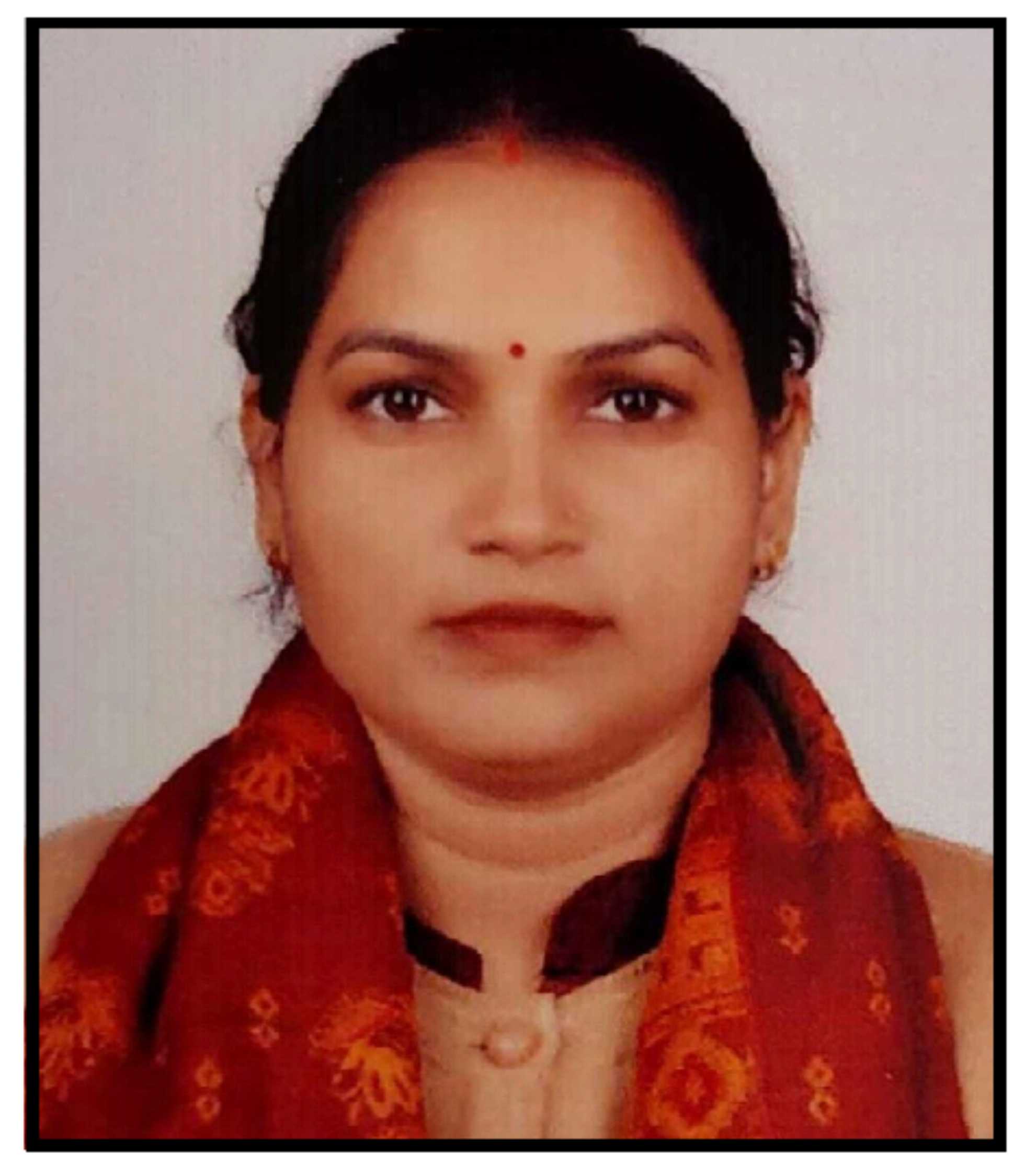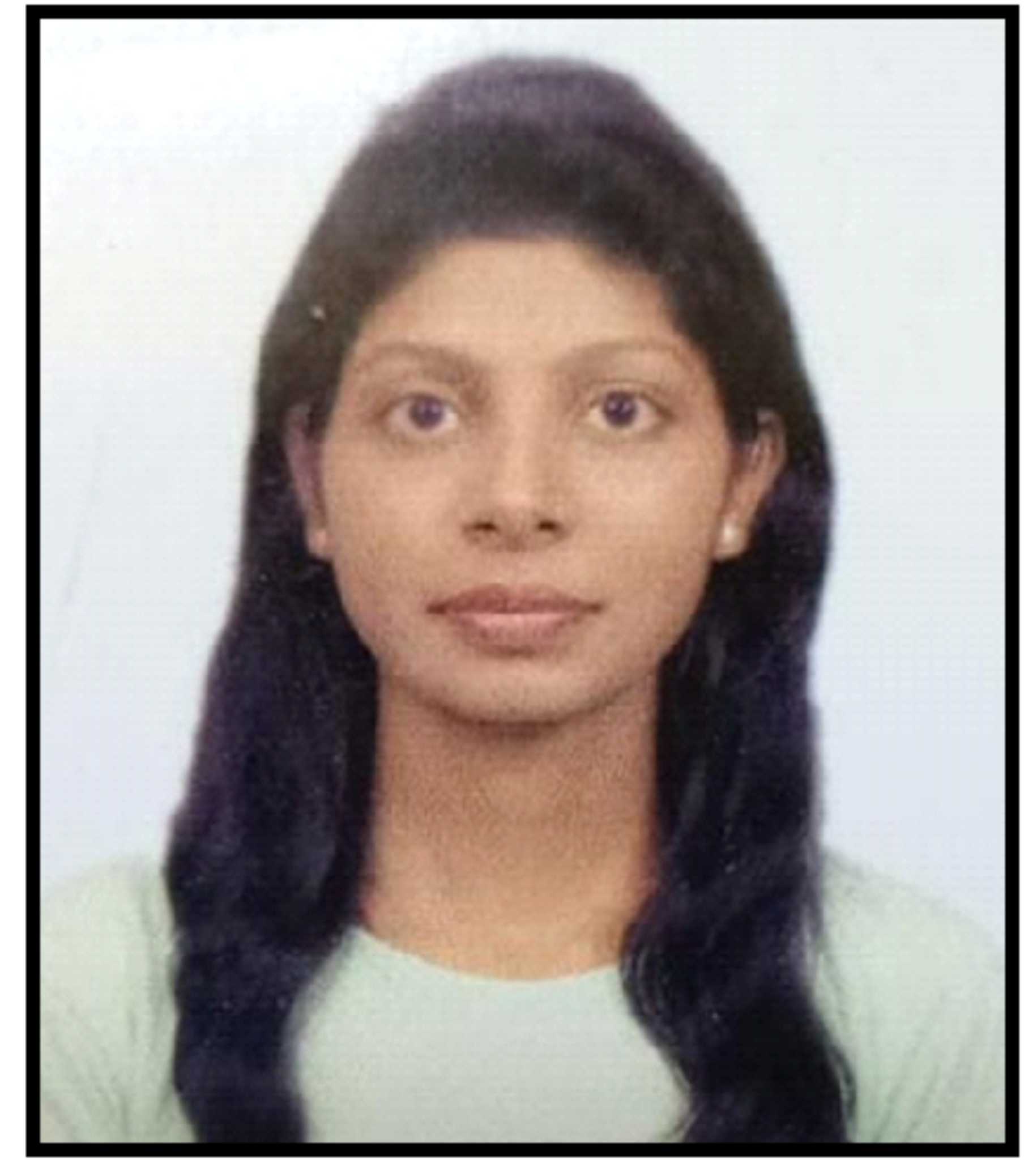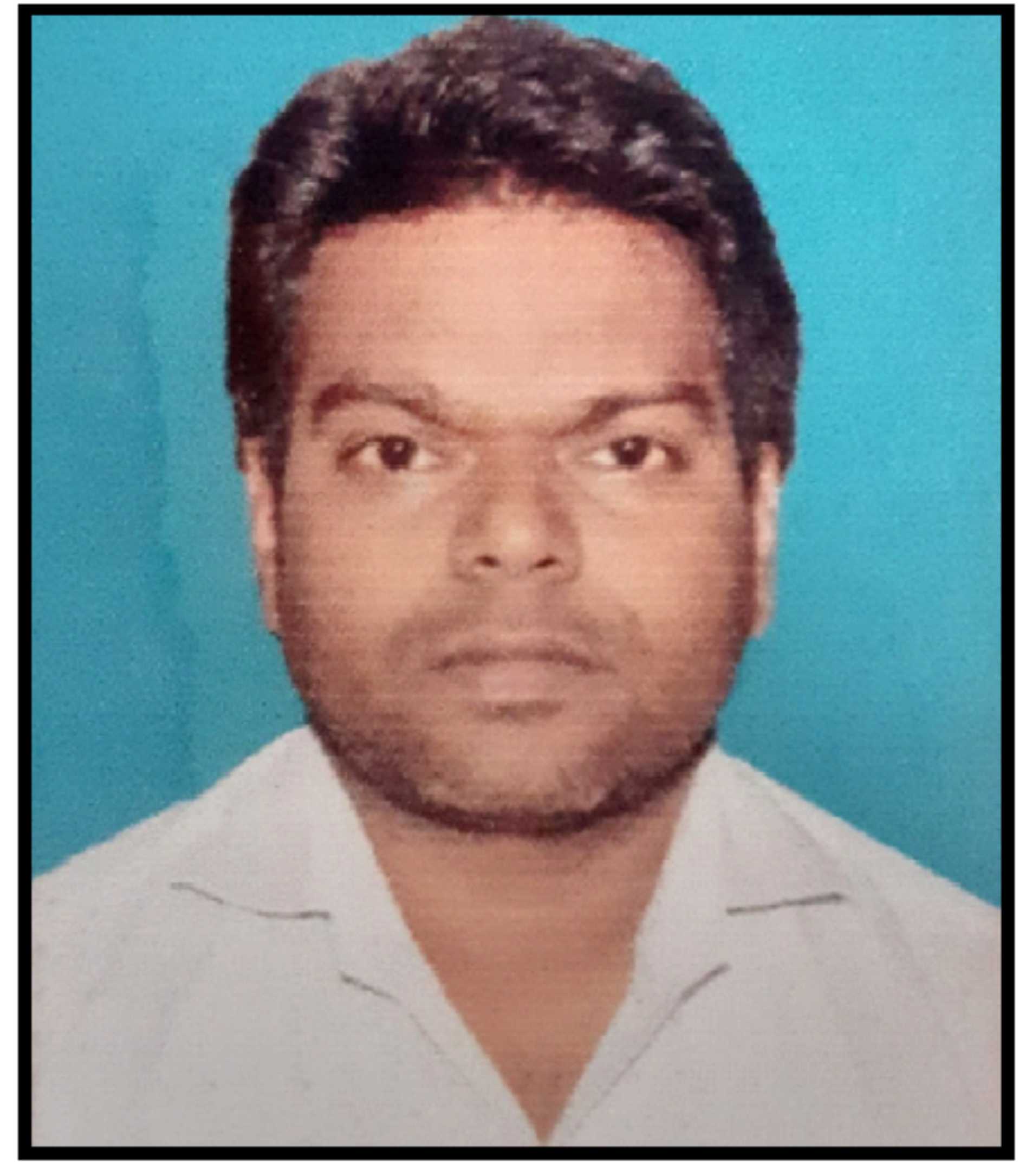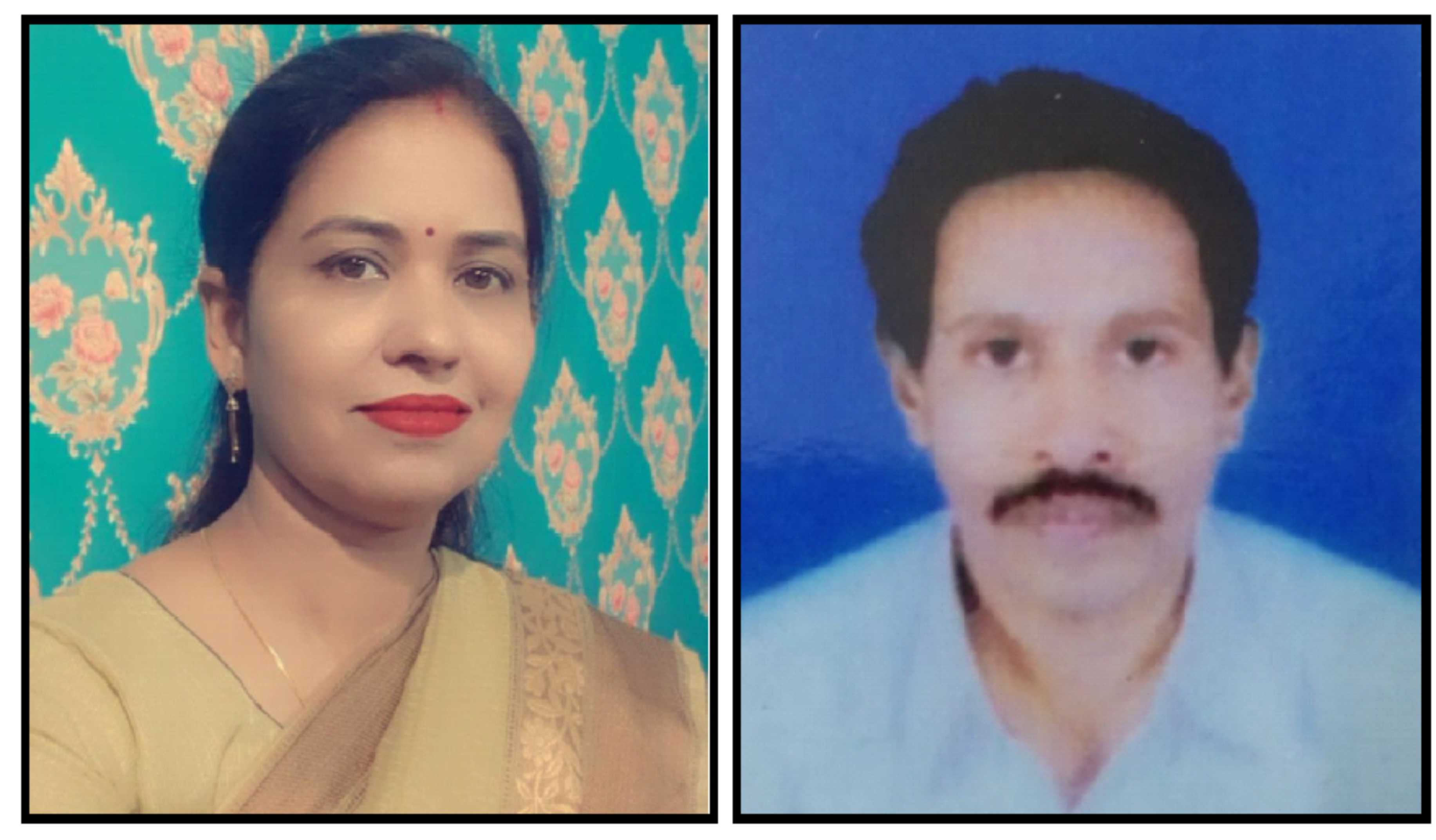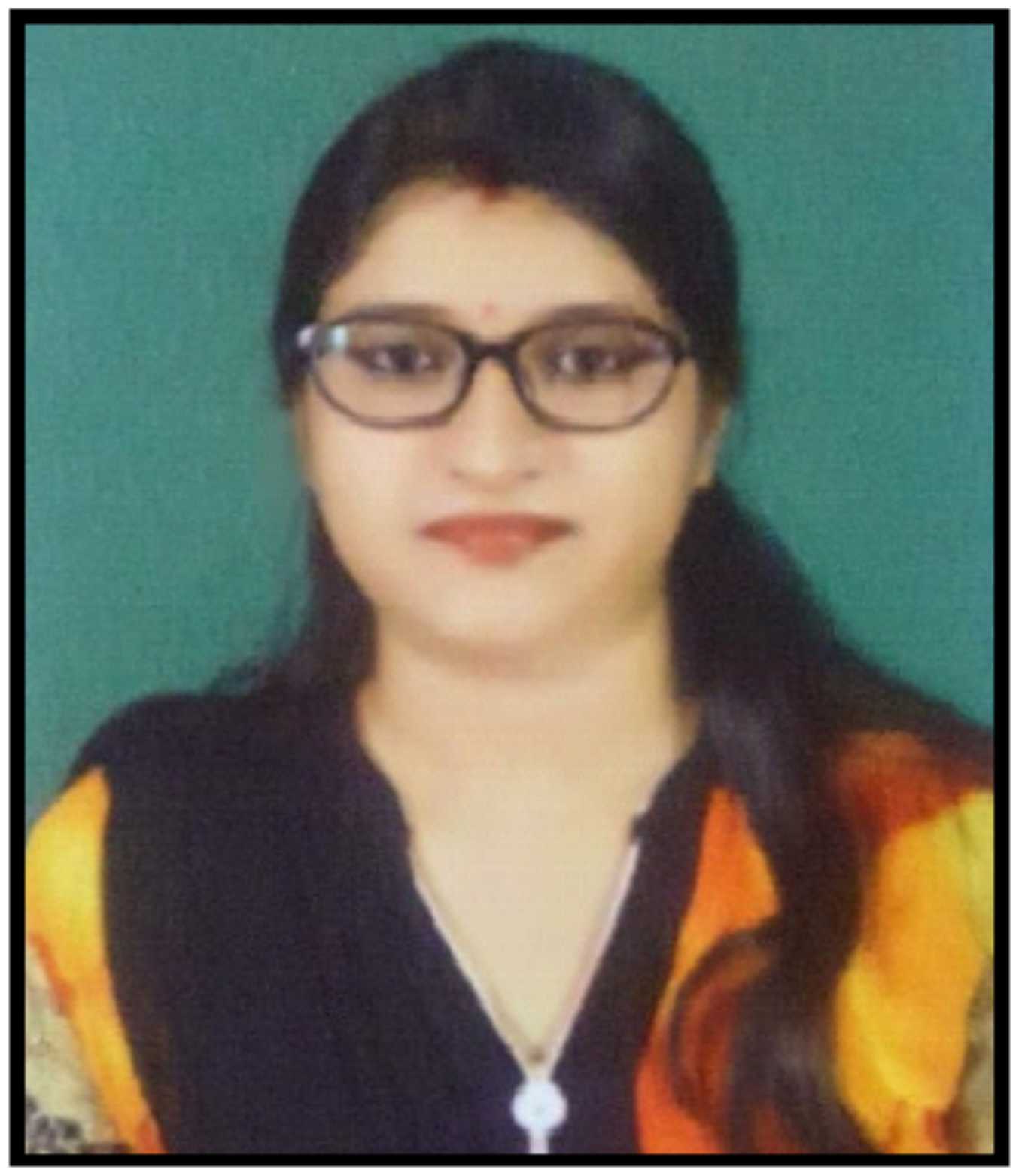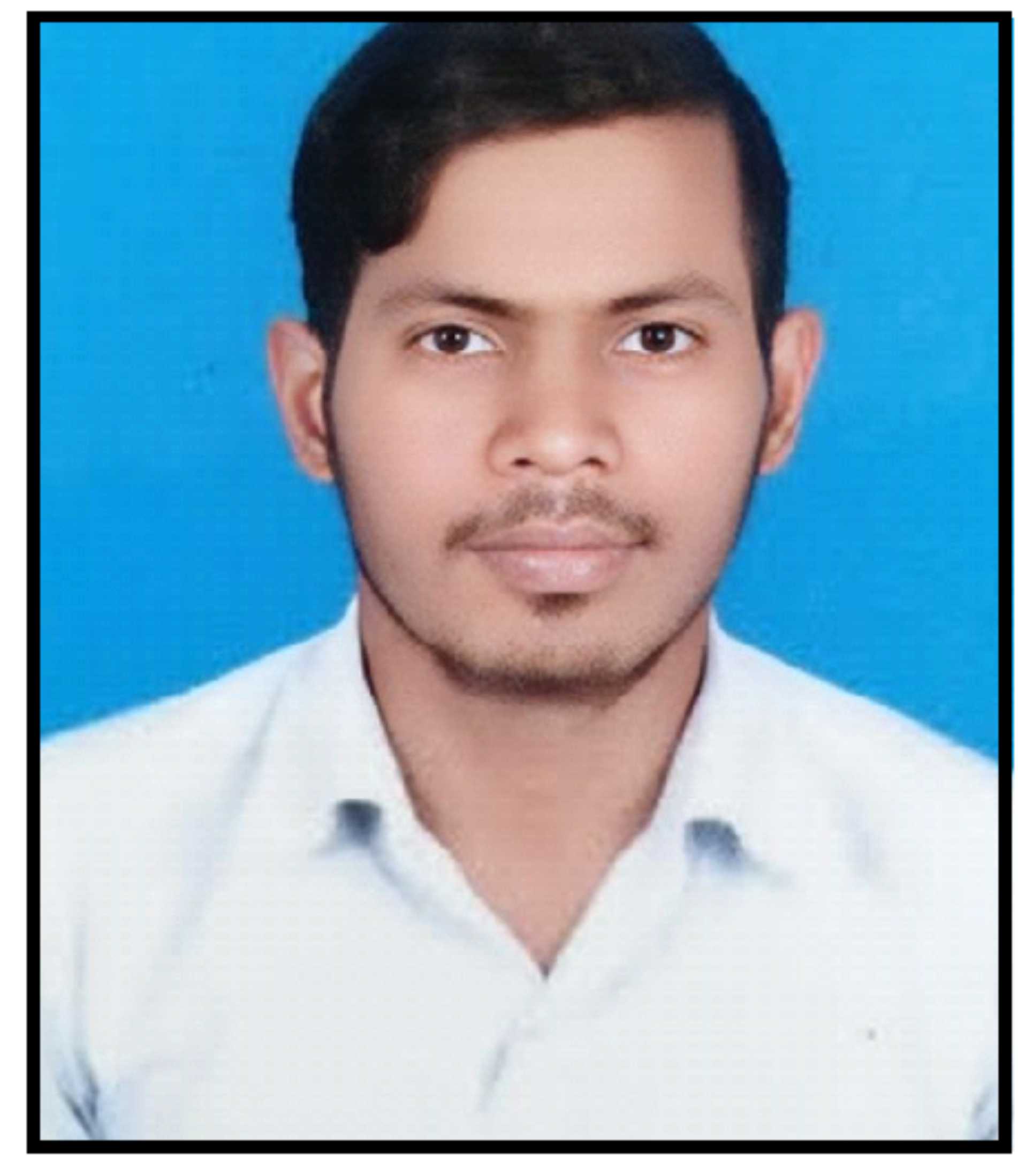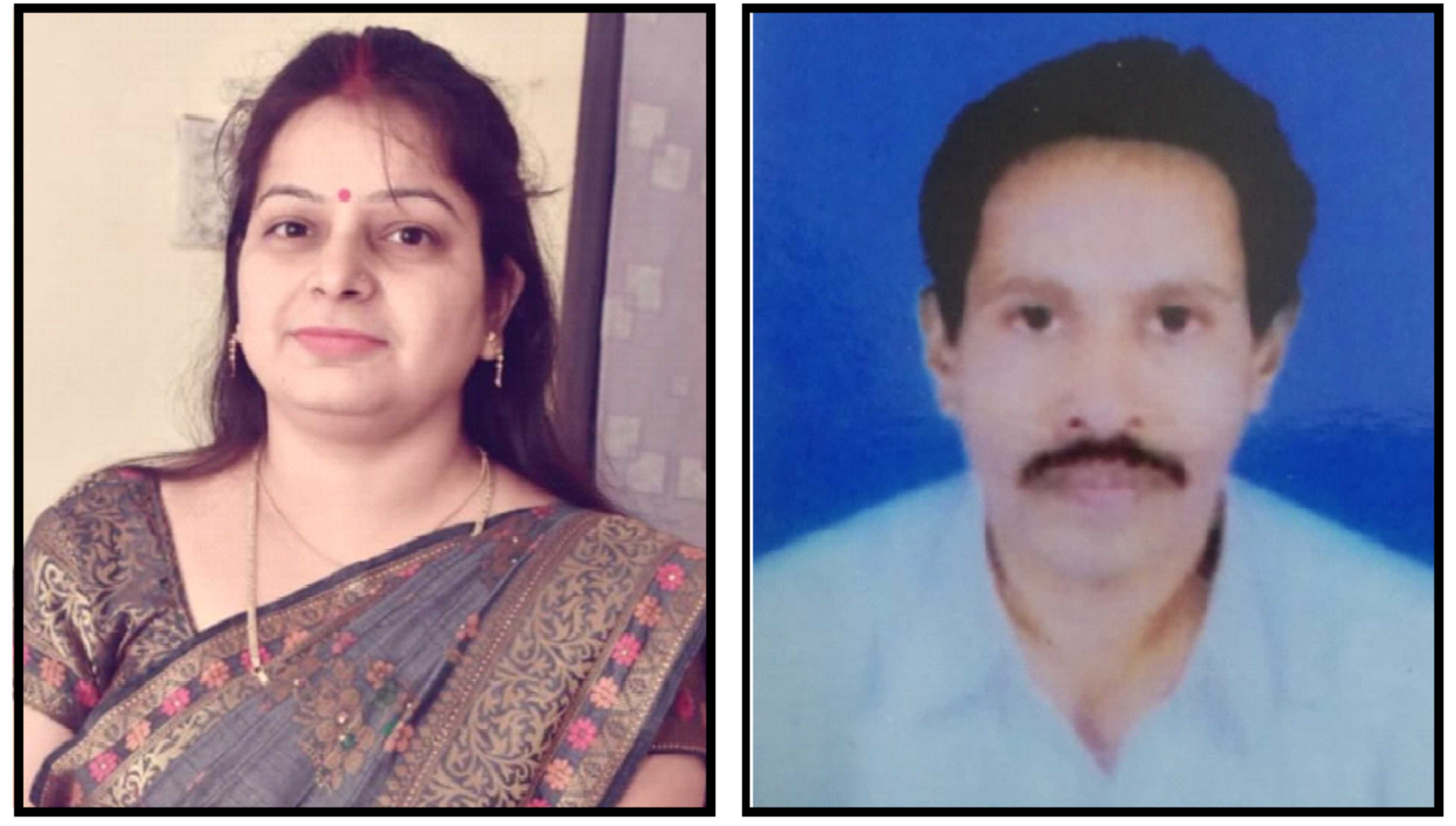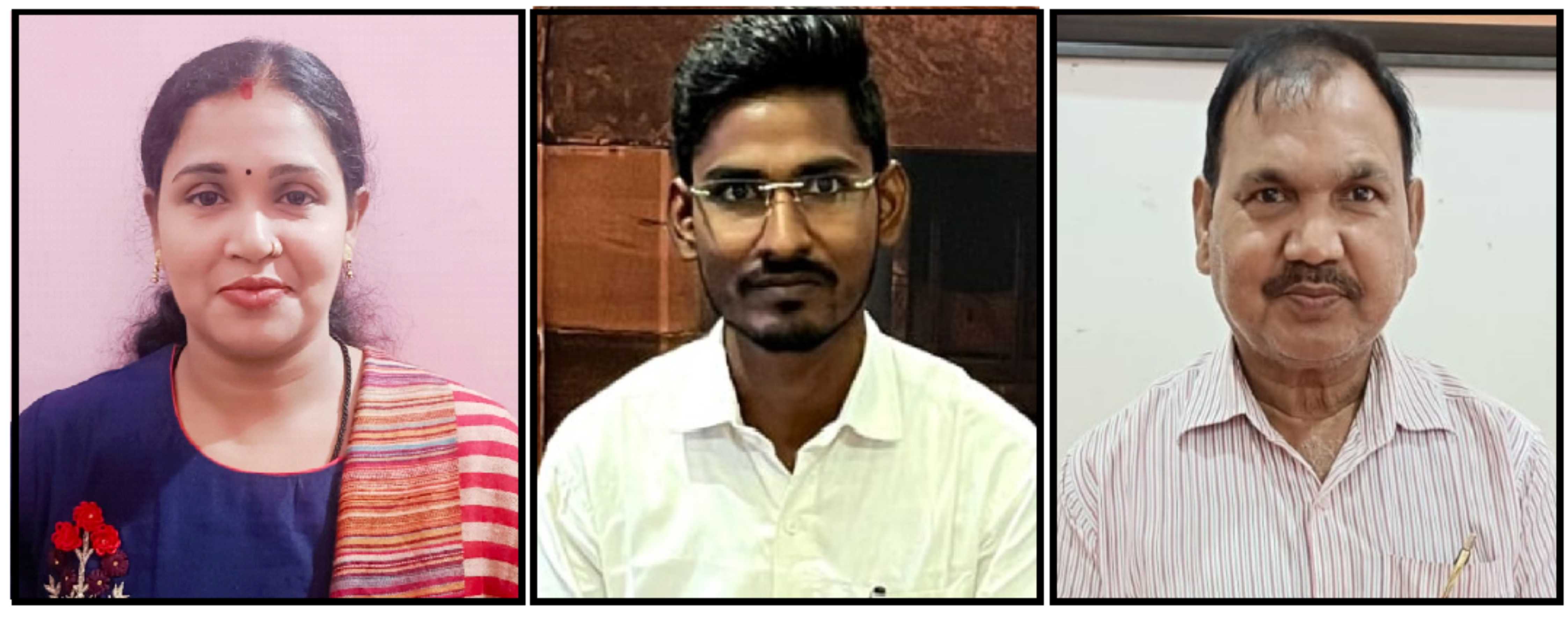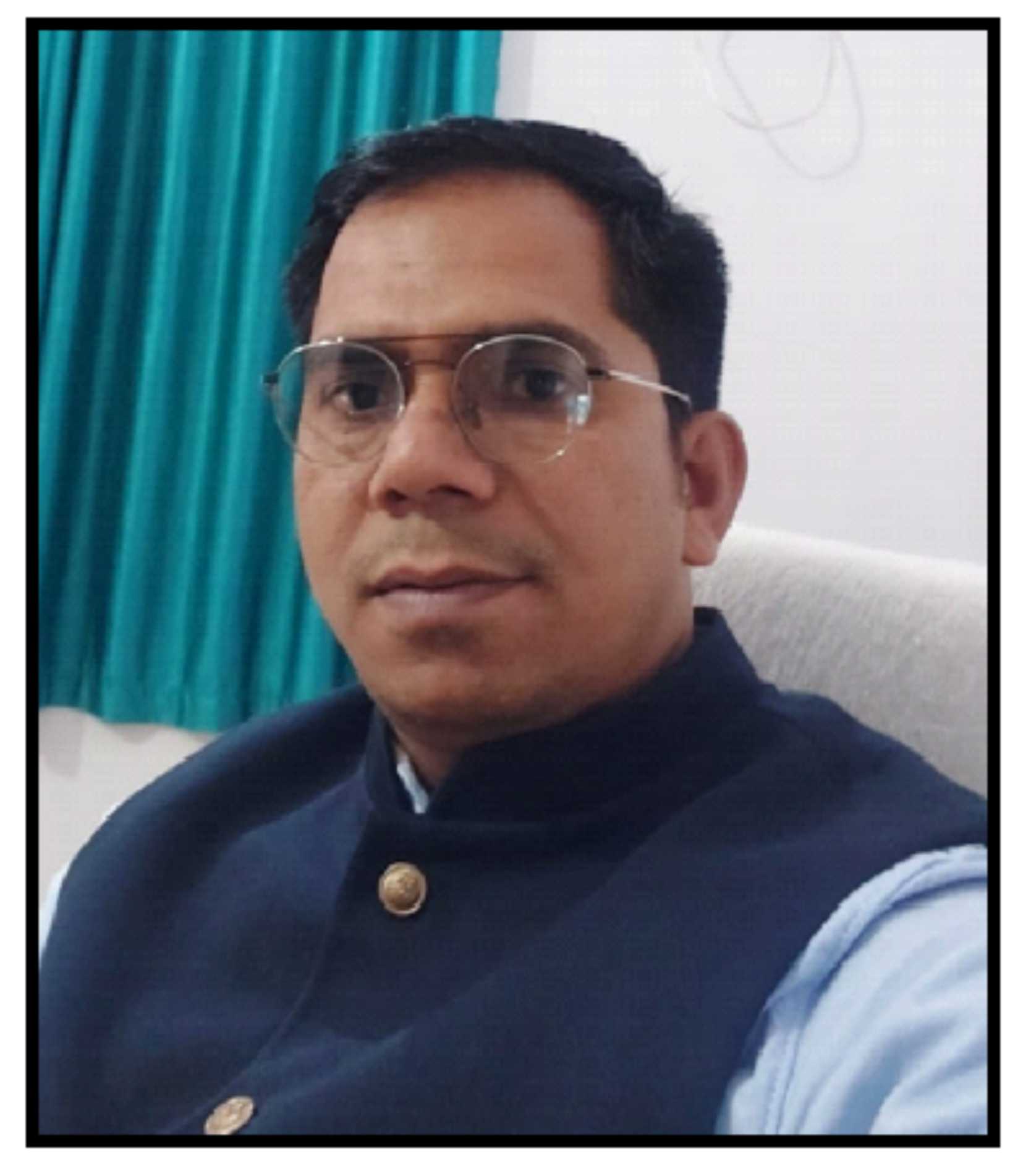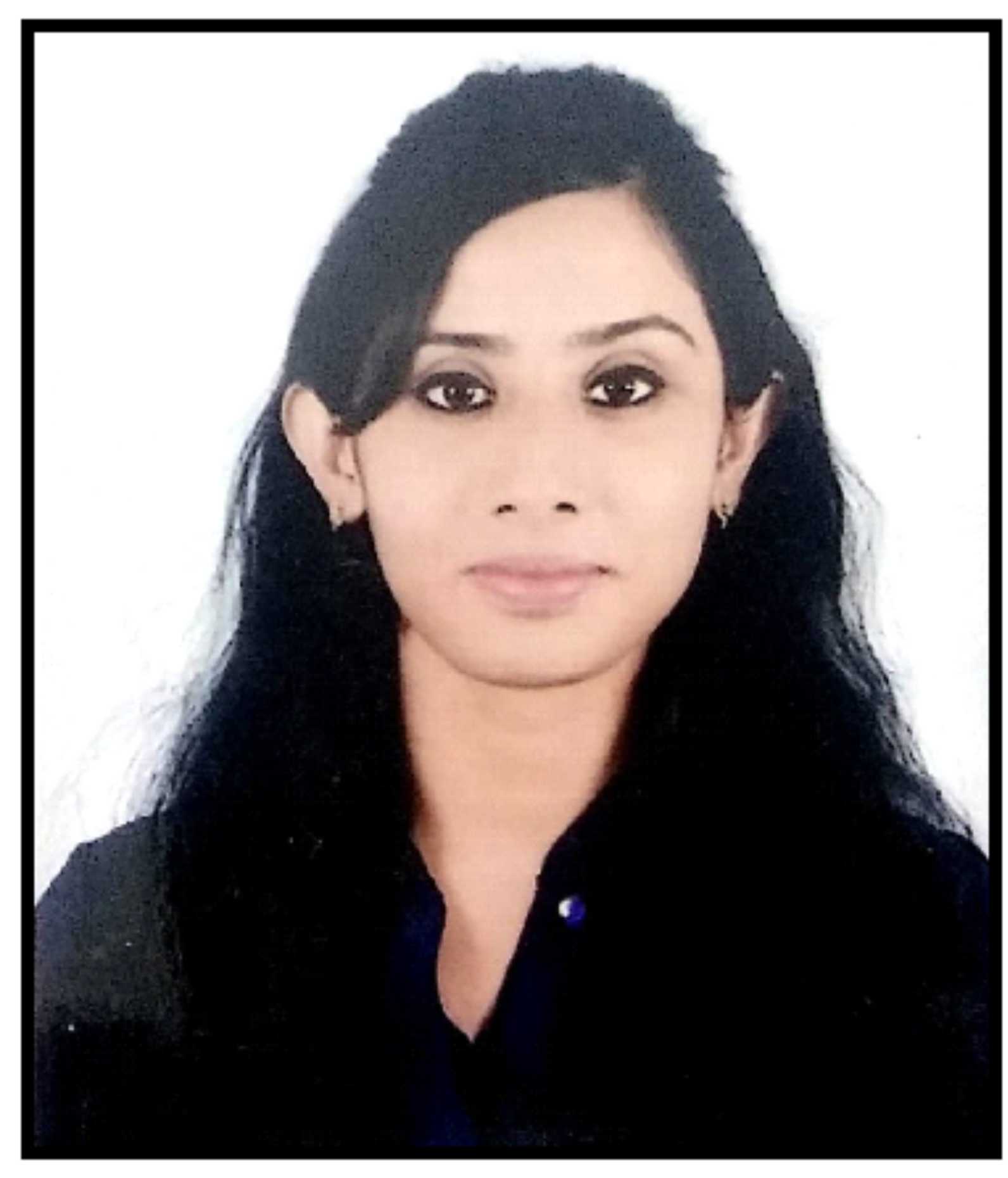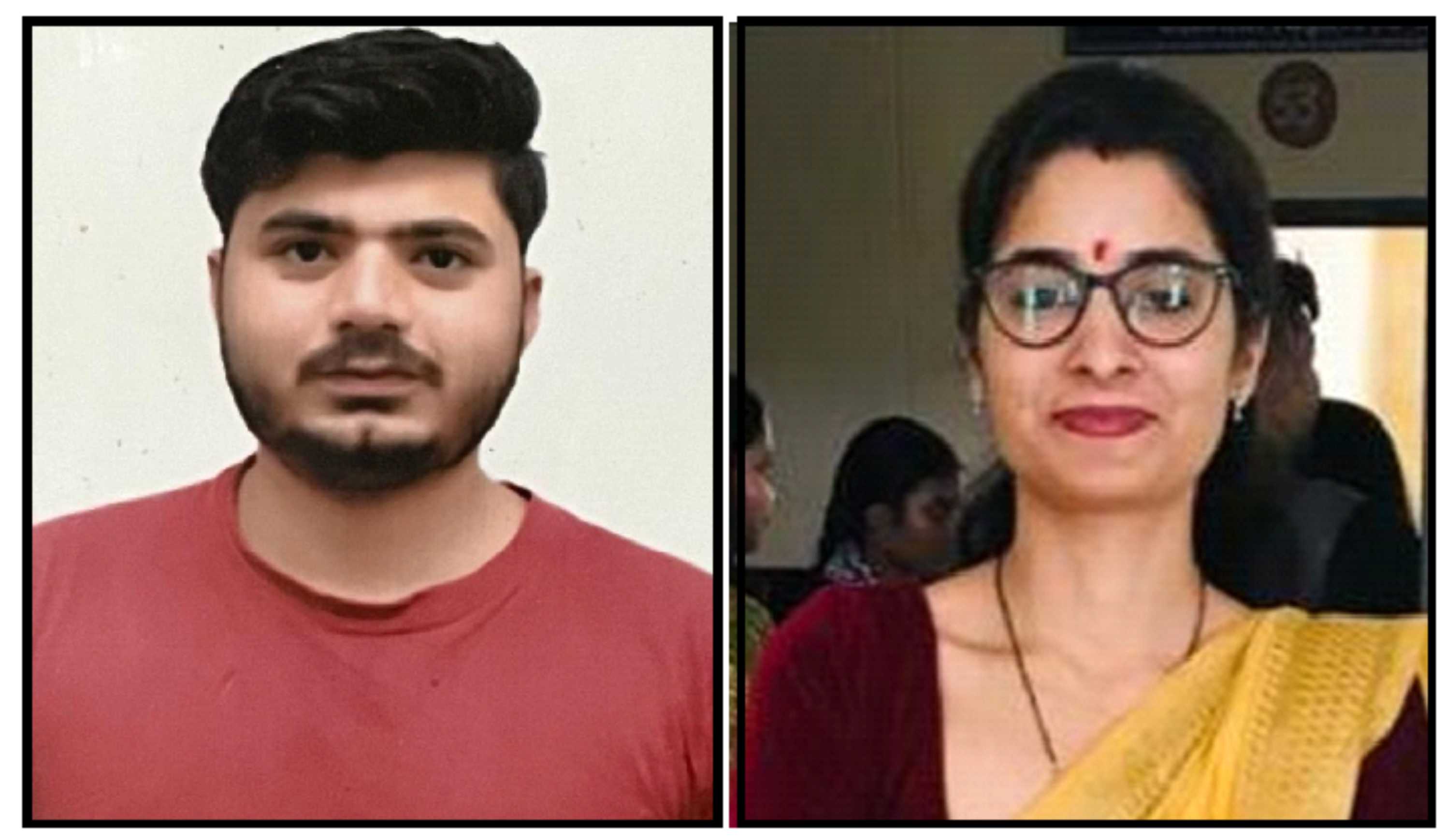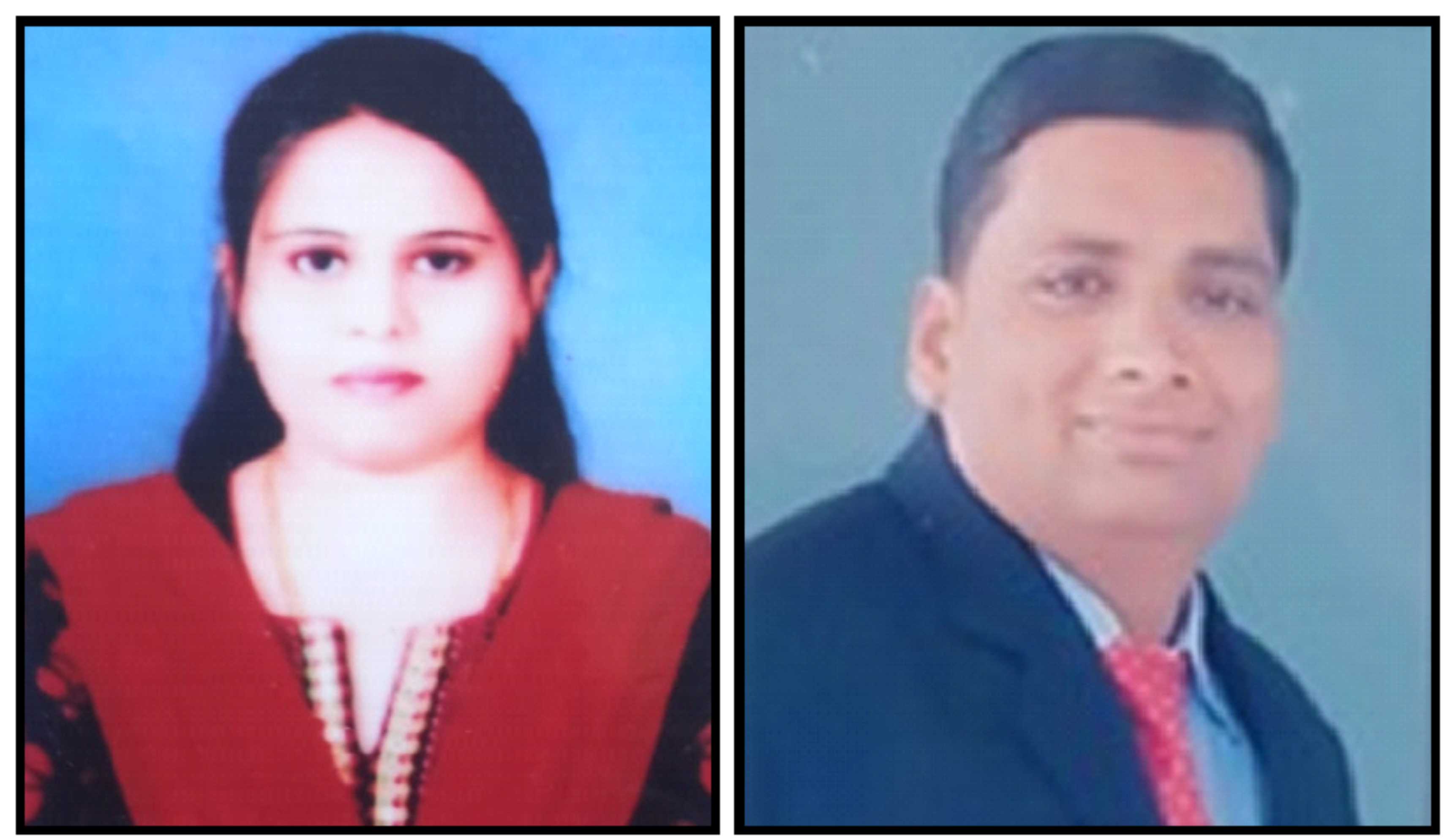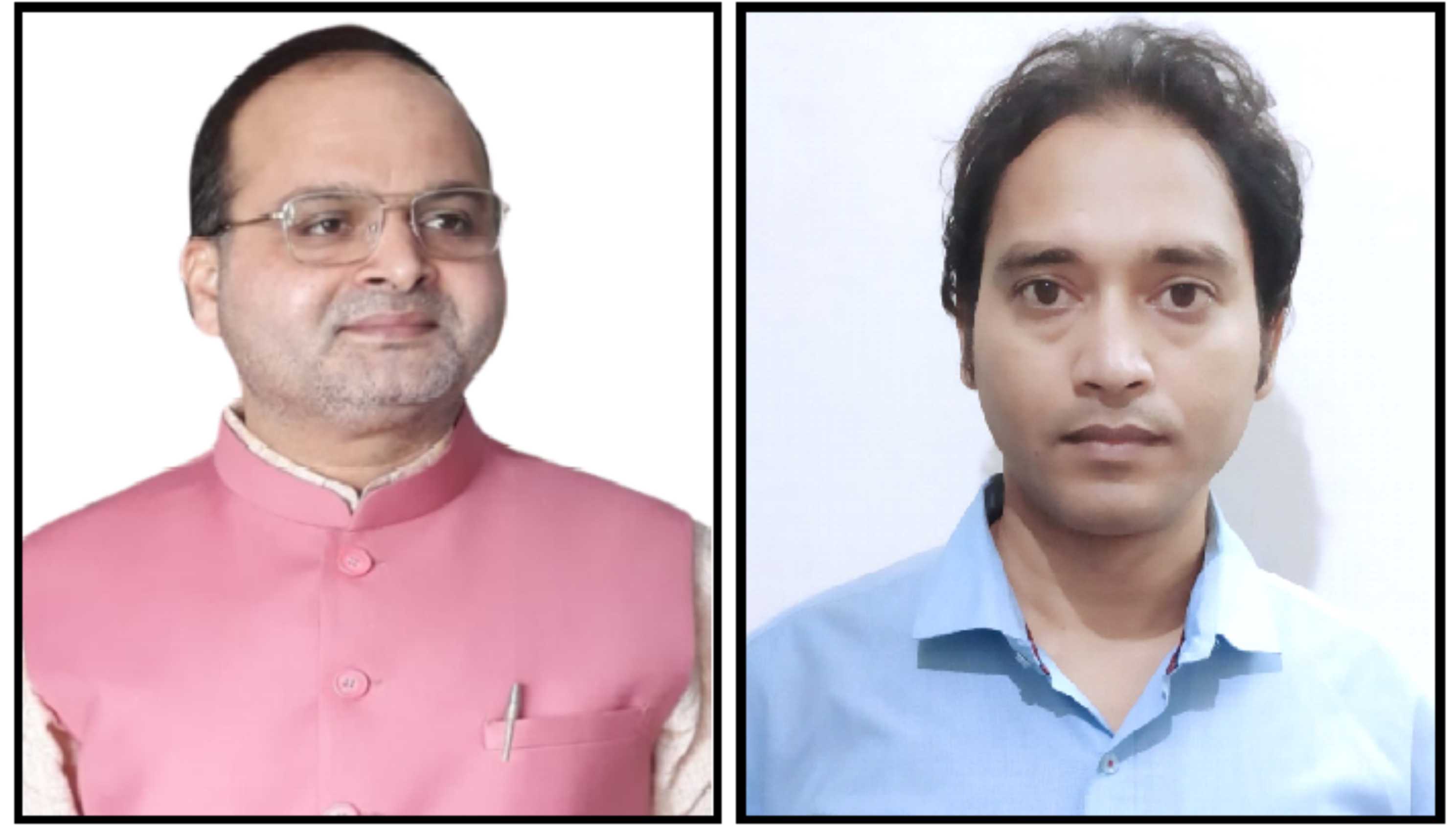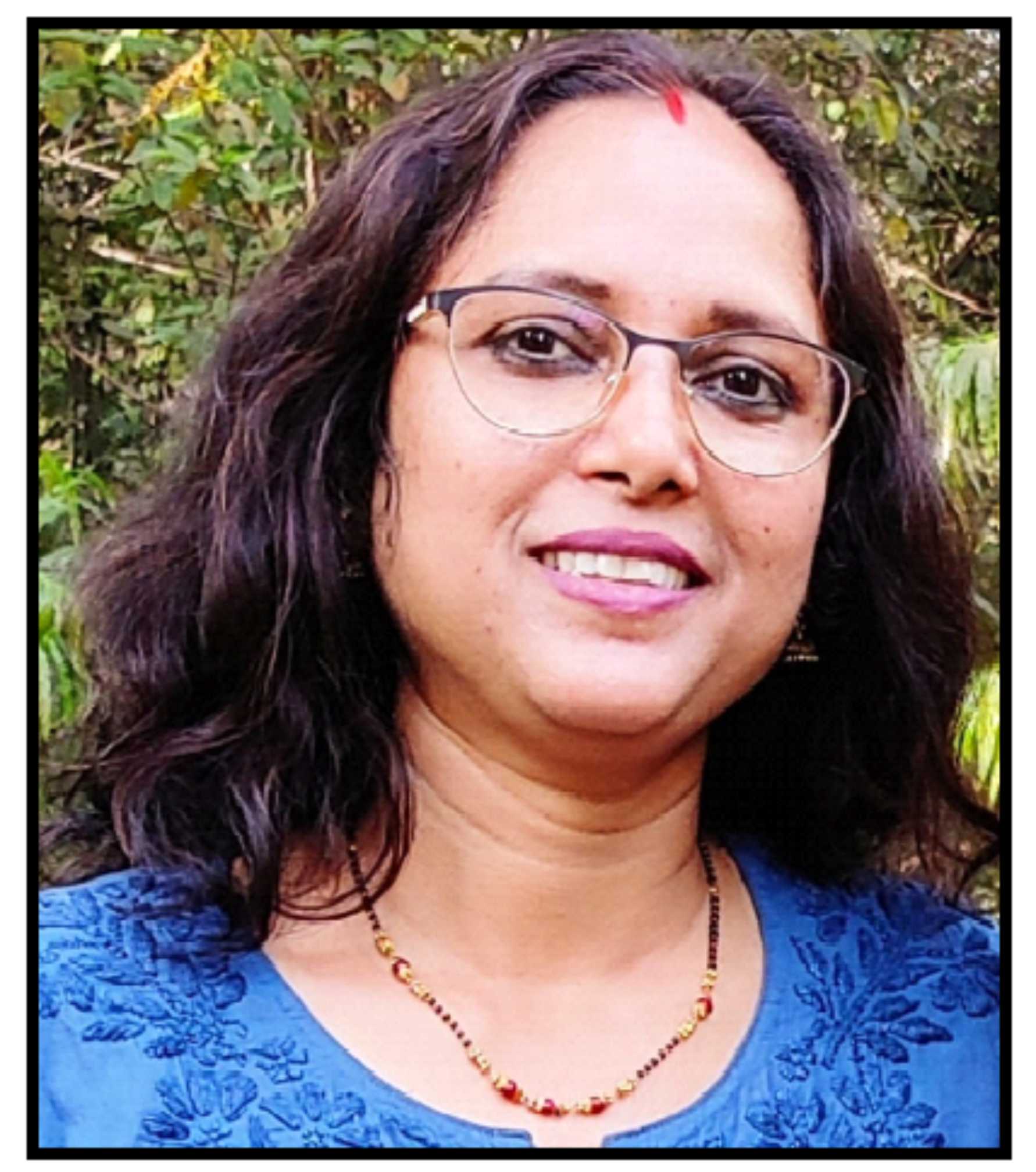- Call Us: +91 9425210308
- Email Us: shodhsamagam1@gmail.com
- RNI : CHHBIL/2018/77892
- ISSN : 2581-6918 (Online), 2582-1792 (Print)
Archieved Data
Publishing Year : 2023
Read Abstract
The use of digital technology in order to improve the present processes or introduce new methods of conducting company operations, which improves the customer experience and leads to better currency exchange rates for the firm, is referred to as digitalization. The major objective of the present study is to analyse the socioeconomic characteristics of sample respondents selected from the area of study. The four major components of digital transformation are technology, software, data, and organizational reorganization. The Indian banking system play a critical role in managing public finances and investing it for the expansion of business and trade. Banks’ stability is vital since they act as trustees of public funds, mobilizers, and funders of various operations at the regional and international levels. The banking business has grown from a basic middleman to a vast commercial enterprise. The present study is based on survey method where data is collected through structured questionnaire from 150 respondents in selected rural areas of Prayagraj District in Uttar Pradesh. The present study concluded that the impact of the digital banking services on rural customers is significant.
Read Keyword
Digitalization, ICT, Rural Area, Banking Sector, Bank Transformation.
Read Reference
1. Acharya, V. V., Khandwala, H., & Öncü, T. S. (2013), “The growth of a shadow banking system in emerging markets: Evidence from India. Journal of International Money and Finance, 39(2),229–230.
Read Abstract
It is expected that e-retail in sectors like fashion, lifestyle products, consumer durables, and apparel, will increase exponentially. With time, the internet is getting popular. This research paper aims to see the impact of online marketing in the apparel segment. Research of this study was aimed to describe the relationship between variables. For example, attitude versus online purchase intention, attitude versus chosen factors (convenience, product performance risk, financial risk, privacy risk, and hedonic shopping motive), post-purchase services, and all. To fulfill the objective a survey method was adopted where primary data was collected from 150 respondents from Lucknow and Kanpur District of UP. For gaining significant insights, the data was further utilized to test the hypothesis by 1. Belch and Belch, (2004) Advertising and Promotion; An Integrated Marketing Communications Perspective, McGraw-Hill.
the application of the Chi-square test.
Read Keyword
e-retail, Apparel, Hedonic Shopping Motive, Purchase Intention, Attitude, Performance Risk
Read Reference
1. Belch and Belch, (2004) Advertising and Promotion; An Integrated Marketing Communications Perspective, McGraw-Hill.
2. Bodla. B. and Saini Pinki (2018) Online Shopping: A study of consumer preference for various products and E- retailing; TSMEJM,7(2),21-32.
3. Cheung & Lee, (2012) What drives consumers to spread electronic word of mouth in online consumer-opinion platforms April Decision Support Systems 53(1):218–225.
4. Jose, Z. M. and Ling, G. H. (2012), “Factors Influencing Consumers’ Attitude towards E-commerce Purchases through Online Shopping”, International Journal of Humanities and Social Science, 2(4), 2012, 223-230.
5. Kalaivani & Arunkumar, (2018) Multi-process prediction model for customer behaviour analysis. International Journal of Web-Based Communities, 14(1):54.
6. Kumar Ajay & Kashyap Anil, (2018). Leveraging the utilitarian perspective of online marketing to motivate online shoppers. International Journal of Retail and Distribution Management, 46(3).
7. Suraj Debbarma and Sutapa Debbarma (2018) An empirical study of the consumer’s behavior towards online marketing in northeast India”, International Journal of Engineering Development and Research, 6(1).
8. Suresh et al (2011) Suresh, A., M. and Shashikala, R(2011) Identifying Factors of Consumer Perceived Risk towards Online Shopping in India,” In 3rd International Conference on Information and Financial Engineering, 12, 2011, 336 -341.
Read Abstract
The term ‘accident’ refers to the damage caused to another person. Any unexpected event beyond normal wisdom that cannot be imagined, or against which protection or protection cannot be done, is called an ‘accident’. A railway accident is an incident in the process of train operations that affects the safety of the Railways, its locomotives, coaches, tracks, passengers, or servants, or whether trains are delayed, causing damage to the Railways. S.124A of the Railways Act, 1989, with effect from 01.08.1994, provides for compensation on account of untoward incident. This paper encapsulates the manner in which Indian railways have been able to address the issue of rail accidents and the compensation system regarding it. This paper foremost provides what entails within the definition of an accident in the ambit of Railways Act, 1989. This paper also has provided with relevant data to better understand the current situation of accidents in railways. Second part of this paper deals with the compensation in case of an untoward incident in railways and how the compensatory concept with respect to accidents has evolved since 1989.
Read Keyword
Accident, Railway Act, Gratuity, Railway Claims Tribunal, Compensation.
Read Reference
1. For statistical purpose IR classified accidents in “A to R” categories excluding I and O, viz., (A- Collisions), (B-Fire or explosion in trains), (C-Accidents at Level crossings), (D-Derailments), (E-Other Train Accident), (F-Averted Collisions), (G-Breach of block rules), (H-train passing signal at danger), (J- failure of engine and rolling stock), (K-Failure of permanent way), (L-Failure of electric equipment), (M- Failure of signalling and telecommunication), (N-Train Wrecking), (P-Casualties), (Q-Other incidents), and (R-Miscellaneous).
Read Abstract
साहित्य समाज की अनुकृति ही है। समाज में स्त्री पुरुष दोनों का संभाव महत्वपूर्ण होता है। इतना ही नहीं उनके साहचर्य के बिना सृष्टि का निर्माण और प्रगति असंभव है। जिस प्रकार जीवन की संपूर्णता में यह दोनों तत्व महत्वपूर्ण होते हैं उसी प्रकार यदि किसी साहित्य में एक ही पक्ष का निरूपण है तो वह श्रेष्ठ कव्य तो नहीं। खासकर चरित्र काव्य की पूर्णता में स्त्री-पुरुष दोनों के जीवन से तत्वों को लेकर उसे समाज उपयोगी रूप प्रदान किया जाता है। रामकथा भी एक चरित काव्य है और इस चरित काव्य में स्त्री-पुरुषों दोनों का चारित्रिक विकास समान रूप से देखने को मिलता है। सीता और राम काव्य के प्रमुख पात्र हैं। इसके साथ ही कैकेई एवं उर्मिला पर साहित्य में आचार्य महावीर प्रसाद द्विवेदी की पहल के बाद प्रचुर साहित्य सर्जन हुआ लेकिन शेष स्त्री पात्रों पर अभी हिंदी साहित्य में मनभर काम नहीं हुआ है। प्रस्तुत शोध पत्र रामचरितमानस के आनुषांगिक महिला पात्रों का वर्तमान सन्दर्भों में अनुशीलन करने का विनम्र प्रयास है।
Read Keyword
आनुषांगिक, महिला पात्र, वर्तमान सन्दर्भ, अनुशीलन.
Read Reference
1. राव पांडुरंग, (2013) रामायण के महिला पात्र, भारतीय ज्ञानपीठ, नई दिल्ली।
Read Abstract
रामकथा के प्रमुख पात्रों की साहित्यिक चर्चा साहित्य एवं शोध ग्रंथों में सहज ही देखने को प्राप्त होती है परंतु वे पात्र जो साहित्यिक उपेक्षा के शिकार हैं, उनपर शोध चर्चा, साहित्य चर्चा भी होनी चाहिए। जो समाज को दिशा देने वाले पात्र हैं उनका उचित सम्मान भी होना चाहिए। रामकथा के वे पात्र जिनका साहित्य में स्वतंत्र वर्णन नहीं हुआ लेकिन सामाजिक दृष्टि एवं रामकथा को गति व विस्तार देने की दृष्टि से वे महत्त्वपूर्ण पात्र हैं, उनमें प्रमुख पात्रों का चारित्रिक अनुशीलन करना महत्त्वपूर्ण जान पड़ता है।
Read Keyword
रामकथा, चारित्रिक अनुशीलन, वर्तमान बोध.
Read Reference
1. तुलसीदास, रामचरितमानस, बालकाण्ड, दो. 43/1
Read Abstract
हिन्दी बाल साहित्य आज प्रत्येक क्षेत्र में अपने प्रतिमान स्थापित कर रहा है। कविता, कहानी, नाटक, उपन्यास, पहेलियां, चित्र कथाएं एवं यात्रा वृतांत इत्यादि ऐसा कौन सा क्षेत्र है जिसमें बाल साहित्य ने उच्च शिखर न प्राप्त किया हो। आज बाल साहित्य पर हजारों शोध एवं लघु शोध कार्य संपन्न हो चुके हैं। इन अरुण से शोध कार्यों से बाल साहित्य जगत को क्या प्राप्त हुआ है इसकी समीक्षा आवश्यक है। इसी को ध्यान में रखते हुए इस शोधपत्र की परिकल्पना में डॉ. श्रीकांत मिश्र के शोध का अनुशीलन करने का विनम्र प्रयास किया गया है।
Read Keyword
बाल साहित्य, समीक्षा, अनुशीलन, शोध परिचर्चा.
Read Reference
1. देव सेवक निरंकार, (1983) बालगीत साहित्य का इतिहास एवं समीक्षा, उत्तर प्रदेश हिंदी संस्थान, लखनऊ यूपी।
Read Abstract
भाषा मनुष्य की जीवन पद्धति का एक महत्वपूर्ण अंग है, भाषा के बिना जीवन यापन कितना कठिन होता यह कौन नहीं जानता। भाषा जहां मनुष्य के जीवन को सरल, रोचक एवं आनंददायक बनती है, वहीं उसके विचारों तथा संस्कारों को अभिव्यक्ति के साथ ही साथ साहित्य के रूप में संरक्षित भी करती हैं। वर्तमान में भारतीय विचारों की धरोहर हिंदी भाषा संभाले हुए हैं। हिंदी विविध क्षेत्रों में अपनी उपादेयता को सिद्ध कर चुकी है। भारतीय सीमाओं से निकालकर आज कई देशों में हिंदी का परचम फहरा रहा है। निश्चय ही यह भाषा अब अंतर्राष्ट्रीय भाषा के रूप में आकर ले रही है और विश्व की प्रसिद्ध भाषाओं में आज हिंदी प्रतिष्ठा प्राप्त कर रही है।
Read Keyword
भाषा, हिंदी, जैन धर्म, शिक्षा.
Read Reference
1. पुष्पलता रेखा सिंह, (2022), कार्यालयी हिन्दी और कम्प्यूटर, एस बी पी डी पब्लिशिंग हाउस आगरा
Read Abstract
This research paper delves into the characteristic features of Yakshini statues in Jainism, examining the artistic expressions, symbolism, and cultural significance embedded in these sculptures. Yakshinis, revered female deities in jain tradition, play a pivotal role in the religious and artistic landscape. Through an interdisciplinary approach combining art history, religious studies, and archaeology, this paper aims to provide a comprehensive understanding of the distinctive features that define Yaksini statues within the Jain artistic tradition.
Read Keyword
Jainism, Tirthankara, Digambar, Achyuta, Chakreshwari, Sasanadevi.
Read Reference
1. Jaiswal, Vidularu, (1987) The outline of the ancient phase of Indian history, Old Age Delhi.
Read Abstract
War is a rot to humanity and involves most brutal and arbitrary violence. The international humanitarian law (also called the law of war or law of armed conflicts) is a part of international law and aims to mitigate the human suffering caused by war. International humanitarian law aims to restrain belligerents from wanton cruelty and ruthlessness, and to provide essential protection to those most directly affected by war. In 1991, the General Assembly adopted a resolution to improve the humanitarian relief capacity of the United Nations. Subsequently, the former Secretary-General, Boutros Ghali established the post of Under Secretary-General for’ Humanitarian Affairs who headed the Department of Humantarian Affairs (DHA).
Read Keyword
Humanitarian, United Nations, General Assembly, War, Arbitrary Violence.
Read Reference
1. Draper, G.I.A.D., The Geneva Conventions of 1949, Recueil des cours, Vol. I, 1965, p. 64.
Read Abstract
प्रस्तुत शोध पत्र में बी.एड. प्रशिक्षणार्थियों के सृजनात्मक शिक्षण अभिवृŸिा का उनके आत्मविश्वास पर पड़ने वाले प्रभाव का अध्ययन किया गया। शोध पत्र का मुख्य उद्देश्य शहरी एवं ग्रामीण क्षेत्र के बी.एड. प्रशिक्षणार्थियों में सृजनात्मक शिक्षण अभिवृŸिा का उनके आत्मविश्वास पर कितना प्रभाव पड़ता है देखा गया है जिसमें कि सृजनात्मक शिक्षण अभिवृŸिा के मापन के लिए आ.पी. शुक्ला द्वारा निर्मित मापनी एवं आत्मविश्वास मापन के लिए डॉ.रेखा गुप्ता द्वारा निर्मित मापनी का उपयोग किया गया है। प्रस्तुत अध्ययन हेतु न्यादर्श के रूप में 120 बी.एड. प्रशिक्षणार्थियों का चयन किया गया है। चयनित प्रशिक्षणार्थियों पर उपरोक्त उपकरण का प्रशासन करके उनके प्राप्तांक ज्ञात किये गये तथा उसके आधार पर परिकल्पनाओं के सत्यापन के लिए सह-संबंध ज्ञात किया गया। निष्कर्ष में ज्ञात होता है कि बी.एड. प्रशिक्षणार्थियों की सृजनात्मक शिक्षण अभिवृŸिा का उनके आत्मविश्वास पर पड़ने वाले प्रभाव में सार्थक सहसंबंध नहीं पाया गया। इसका कारण यह हो सकता है कि ग्रामीण क्षेत्र के बी.एड. महाविद्यालय के छात्र-छात्राओं एवं शहरी क्षेत्र के बी.एड. महाविद्यालय के छात्र-छात्राओं में आत्मविश्वास से शिक्षण का विकास होता है।
Read Keyword
सृजनात्मक, जागरूकता, आत्मविश्वास, तुलनात्मक.
Read Reference
1. Babu Anil & Aaradhna (2019), माध्यमिक स्तर के कार्यरत शिक्षकों के आत्मविश्वासरू एक अध्ययन, Journal of Acharya Narendra Dev Research Institute, 27, 197-2033
Read Abstract
Education has been an integral part of human civilization. From ancient times to the present era, progressive changes are being seen in the education system of India. Since primitive times, when language was not even developed, fine arts have been a powerful medium of self-expression and creativity in human life. Although the language had developed in the Indus period; But in the education system of the Vedic period, language was made exemplary as a powerful medium of study and teaching and this trend has continued continuously since then till the modern education system. When we consider and reflect on the role of education in human development, the relevance of creative arts education in enhancing the overall personality of man seems to be inherent in the ancient education system itself. The main objective of this research paper is to prepare the layers of sequence and progressive development of fine arts education till the modern era.
Read Keyword
Gurukul, Tolas, Pathshalas, Chatuspadis, Ancient Universities, Skill-development, Buddhist monasteries.
Read Reference
1. Agrawala Vasudeva, (1986) “The Heritage of Indian Art, a Pictorial Presentation”, Publication Division, Govt. of India.
Read Abstract
This research delves into the intricate web of supply chain dynamics within the context of “Goods and Service Tax (GST)” implementation in the automobile service sector, focusing on businesses operating in Chhattisgarh State, India. The study aims to unravel the multifaceted impact of GST on the operational facets of automobile service centers, exploring its ramifications on procurement, inventory management, and overall supply chain efficiency. India stands as one of the foremost players in the global automobile manufacturing arena, with its automotive sector playing a pivotal role in contributing significantly to the nation’s economy. This industry has emerged as a key driver of both GDP growth and employment generation in India. Utilizing a case study approach, the research employs both qualitative and quantitative methodologies to comprehensively assess the transformations brought about by GST. Through in-depth interviews, surveys, and analysis of financial data, the study aims to capture the nuanced experiences and perspectives of key stakeholders, including service center owners, suppliers, and customers. Key focal points of the research include the assessment of GST-induced changes in procurement costs, supply chain transparency, and compliance requirements. Additionally, the study explores the adaptability of automobile service centers to the altered tax structure and its subsequent effects on inventory management strategies. By examining the shifts in cost structures and operational practices, the research seeks to offer valuable insights into the evolving landscape of the automotive service industry. The findings of this research not only contribute to the academic understanding of the impact of GST on supply chain dynamics but also provide practical implications for business owners, policymakers, and industry practitioners. Ultimately, this study aims to enhance the knowledge base surrounding GST implications on supply chains, offering a nuanced perspective that can inform decision-making processes and foster sustainable growth within the automobile service sector.
Read Keyword
Goods and Service Tax (GST), Supply Chain Dynamics, Automobile Service Centers, Inventory Management, Operational Efficiency, Tax Impact.
Read Reference
1. Ackerman, R. K. (2004). “Defense Logistics Modernizes Commercially.” Signal-Falls Church Virginia Then Fairfax, 58(5), 33-36.
Read Abstract
In healthcare system, financing of healthcare is an important function. With the help of health service coverage and financial protection, it can enable the Universal Health Coverage. Good financing of healthcare means the out-of-pocket expenditure should be low. For an efficient healthcare system, the need of affordable health care is a must. But a large part of the population of the country could not afford the expensive healthcare service or they receive inferior quality of healthcare service after the out-of-pocket expenditure. The main source of health financing is tax-based health insurance, Government health insurance, private health insurance and out-of-pocket expenditure. Most people of Jharkhand’s main source of health financing is out-of-pocket expenditure, because they do not have any kind of health insurance. Under out-of-pocket expenditure own saving comes first as financing of health care, then comes selling of property, borrowing from families and friends, loan from banks, etc. There is lack of knowledge among people about Government or private health insurance scheme, due to which they could not avail the health insurance facility. The Government of Jharkhand should need to focus on this problem.
Read Keyword
Health, Finance, Economic, Insurance, Out of Pocket Expenditure, Patient.
Read Reference
1. Akhter, Shamima and Charles P Larson (2010). “Willing to Pay for Zinc Treatment of Childhood Diarrhea in a rural Population of Bangladesh”, Health Policy and Planning, Vol. 25, No. 3, pg. 230-236.
Read Abstract
Dr. B. R. Ambedkar, popularly known as Babasaheb, was an economist and in economics. He was the first Indian to be awarded a Ph.D. He holds a Master’s degree in Economics and a Ph.D. from Columbia University in 1915 and 1917 respectively. In the three years he spent at university pursuing higher education, he completed 29 courses in economics. He received a Doctorate of Science from the London School of Economics (LSE), which was awarded to him in 1923. This article is about Dr. in India’s economic development. Discusses the contribution of Babasaheb Ambedkar.
Read Keyword
Indian economy, Economic thought, Indian rupee, Economic policy.
Read Reference
1. Jadav N., Neglected Economic Thought of Babasaheb Ambedkar, Economic and Political Weekly, Year 1991, Vol.26, No.15: Page No. 980 to 982.
Read Abstract
जैन धर्म प्राचीन दर्शन है जिसने मनुष्य के मन मस्तिष्क पर बहुत गहरा प्रभाव डाला है यहां तक कि वर्तमान शिक्षा प्रणाली के तहत, छात्र और छात्राये अपने पाठ्यक्रम का पालन करने के लिए स्कूलों और कॉलेजों में जाते हैं पर शिक्षा का उद्देश्य व्यक्तिगत एवं सामाजिक दोनों हो सकता है। किसी व्यक्ति की शिक्षा ऐसी होनी चाहिए जो शारीरिक, और मानसिक विकास में सहायक हो। किसी व्यक्ति के व्यक्तित्व के नैतिक पहलू इस प्रकार कह सकते है कि शिक्षा का उद्देश्य किसी व्यक्ति के व्यक्तित्व के विकास तक ही सीमित नहीं है; वरन यह ‘संपूर्ण गुण संपन्न मनुष्य‘ विकसित करने का प्रयास करता है। जैन धर्म शिक्षा और जीवन के उद्देश्य को समान पृष्ठभूमि प्रस्तुत करता है। शिक्षा के उद्देश्य जीवन के लक्ष्यों से प्रभावित होती है। शिक्षा जीवन के उद्देश्यों की पूर्ति का महत्वपूर्ण साधन है। जैन धर्म में काफी अच्छा दर्शन है और शिक्षा के स्थायी उद्देश्य प्रदान करता है। जैन धर्म न केवल सांसारिक सुखों और आत्मीय सुखों को प्राप्त करने का एक वास्तविक स्रोत है, बल्कि पूर्णता, सर्वज्ञता और शाश्वत अनंत खुशी प्राप्त करने के लिए सांसारिक आत्मा को शुद्ध करने का एक विज्ञान भी है। यह न सिर्फ मानव जाति की, बल्कि पशु ,पक्षियों और श्रेष्ठों की भी मौलिक,स्वतंत्र, वैज्ञानिक, सार्वभौमिक, व्यवस्थित और आदिम आस्था है। यह स्वतंत्रता, शुद्ध आनंद,आत्म-जिम्मेदारी, आत्म-बोध,पारस्परिक सहयोग, आध्यात्मिक उन्नति, सभी को अच्छे विचार, मधुर स्वभाव, सादा जीवन, शुद्ध भोजन, संतोष, शांति, प्राप्त करने हेतु अनुकरणीय साधन है।
Read Keyword
जैन धर्म, दर्शन, प्रभाव, पहलू, सार्वभौमिक शिक्षा.
Read Reference
1. चंद्र कैलाश, जैन धर्म. मथुरा, भारतीय दिगंबर जैन संघ चौरासी, 1965।
Read Abstract
Read Keyword
शिल्पकार आन्दोलन, नवजागरण, मुंशी हरिप्रसाद टम्टा.
Read Reference
1. कंवल भारती, सांकृत्यायन राहुल और अम्बेडकर भीमराव, बौद्ध धर्म, आर्य सिंद्धात और अछूतोद्वार, साहित्य उपक्रम, दिल्ली 2007, पृष्ठ-7,
Read Abstract
आधुनिक भारत के इतिहास में गांधीजी एक महान व्यवहारिक राजनीतिज्ञ, कुशल दार्शनिक एवं सच्चे कर्मयोगी थे जिन्होनें सत्य एवं अहिंसा से युक्त नैतिकता आधारित सामाजिक समानता एवं राजनीति का मार्ग प्रशस्त किया। सामाजिक समरसता की बात की जाए तो प्राचीन काल में कोई जाति व्यवस्था नहीं थी। कर्मों के आधार पर समाज चार वर्णों में विभाजित था परंतु कालांतर में यही वर्ण व्यवस्था जाति व्यवस्था का रूप ले लिया तथा उच्च वर्ग के लोगों द्वारा निम्न वर्ग के लोगों का निरंतर शोषण किया जाने लगा। यही से उच्च और नीच के इस भेदभाव ने 18वीं एवं 19वीं सदी आते-आते उग्र रूप धारण कर लिया। इसके बाद अनेको समाज सुधारक ने इस भेदभाव को दूर करने का प्रयत्न किया। गांधी जी उन्हीं समाज सुधारको में से एक थें। महात्मा गाँधी का जीवन आज भी प्रासांगिक है। सामाजिक समरसता भारतीय संस्कृति का - मौलिक चिंतन है। महात्मा गाँधी के विचारों में भारतीय संस्कृति के मौलिक चिन्तन का प्रभाव स्पष्ट रूप से देखा जा सकता है। उन्होंने भारतीय स्वतंत्रता आन्दोलन के दौरान ही समझ लिया था कि बिना सामाजिक समरसता के राष्ट्रीय एकता की स्थापना नहीं की जा सकती। यही कारण है कि स्वतंत्रता आंदोलन के दौरान सामाजिक सौहार्द की स्थापना, रंगभेद एवं अस्पृश्यता की समाप्ति, सर्वधर्म-सम्मान, महिला उत्थान, कार्यक्रम भंगी मुक्ति कार्यक्रम, स्वच्छता, ग्रामोदय अभियान, मद्य निषेध एवं अशिक्षा के उन्मूलन द्वारा चरित्र के निर्माण आदि पर बल दिया। इन उद्देश्यों के माध्यम से गांधीजी अपने राष्ट्रीय एकता के लक्ष्य को प्राप्त कर स्वतंत्रता आंदोलन में विजय प्राप्त करना चाहते थे ताकि भारत एक शक्तिशाली राष्ट्र के रूप में विश्व में अपना स्थान बना सके।
Read Keyword
दार्शनिक, निरंतर शोषण, रंगभेद, अस्पृश्यता, सर्वधर्म सम्मान, महिला उत्थान.
Read Reference
1. गांधी एम. के., (1949) ऑटोबायोग्राफी द स्टोरी ऑफ माई एक्सपेरिमेंटस विद ट्रुथ, नवजीवन पब्लिशिंग हाउस, अहमदाबाद, पृष्ठ - 732।
Read Abstract
यह शोध कार्य विभिन्न परिकल्पनाओं के महत्व के परीक्षण के उद्देश्य से इसके सांख्यिकीय उपचार और विश्लेषण को सुविधाजनक बनाने के लिए विधिवत व्यवस्थित और सारणीबद्ध डेटा की प्रस्तुति देता है। चार समूहों शहरी पुरुषों, शहरी महिलाओं, ग्रामीण पुरुषों और ग्रामीण महिलाओं की तुलना करके विभिन्न परिकल्पनाओं का निर्माण और परीक्षण किया गया है। यह आवश्यक है कि जनसंख्या जागरूकता से संबंधित अनुसंधान अध्ययन जिला और क्षेत्र स्तर पर आयोजित किए जाने चाहिए क्योंकि भारत इस स्तर पर बहुत अधिक जनसांख्यिकीय और स्थलीय विविधताओं वाला देश है। जहाँ तक रांची क्षेत्र का संबंध है, इस क्षेत्र में अभी भी इस प्रकार के शोध-कार्य का अभाव है।
Read Keyword
शैक्षिक, क्षेत्र, जागरूकता.
Read Reference
1. भौमिक, आर. (1977), प्राचीन भारत में शिक्षार्थियों की नैतिक शिक्षा की व्यवस्था, आर. लाल बुक डिपो, मेरठ।
Read Abstract
जलसंरक्षण आधुनिक समय की सबसे बड़ी चुनौती है। अधुना जलसंरक्षण हेतु विविध उपाय किए जा रहे हैं। ठीक उसी प्रकार भास कृत रामाश्रित रूपकों के माध्यम से महाकवि ने उस समय जल की स्थिति, आवश्यकता एवं उसके न होने से होने वाले खतरों का उल्लेख किया है। उक्त ग्रन्थों के अध्ययन एवं दर्शन से सहृदयों एवं दर्शकों को जलसंरक्षण के प्रति प्रेरित करने सार्थक प्रयास किया गया है।
Read Keyword
जलसंरक्षण, राम, ग्रंथ, संस्कृत, साहित्य.
Read Reference
1. महाकवि कालिदास कृत मालविकाग्निमित्र।
Read Abstract
लोकतंत्र का अर्थ उस राज्य में निवास करने वाले नागरिकों को मतदान प्रक्रिया के माध्यम से अपने जनप्रतिनिधियों को चुनने का अधिकार। लोकतंत्र में नागरिको को अपने जनप्रतिनिधियों को चुनने की आजादी है, जो उनकी जरूरतों की रक्षा करेंगे, सुरक्षा प्रदान करेंगे और सुनिश्चित करेंगे कि उनके नागरिकों की रक्षा करने वाले कानूनों का पालन किया जाए। जनप्रतिनिधि प्राकृतिक कानून और चुनाव प्रक्रिया के दौरान किए गए वादों के माध्यम से अपने लोगों के अधिकारों की रक्षा करते हैं। मानव अधिकार मानव होने के नाते दिया जाने वाला अधिकार है, जो सार्वभौमिक है तथा सभी पर समान रूप से लागू होता है। मानवाधिकार स्थापित करते हैं कि सभी मनुष्य, चाहे वे किसी भी देश, संस्कृति और संदर्भ के हो, जन्म से स्वतंत्र है और गरिमा और अधिकारों में समान है। लोकतंत्र की नीति में आम चुनाव, प्रभाव के लिए व्यक्ति के अवसरों को मजबूत करने और उनकी रक्षा करने उपाय और मानवाधिकारों के सम्मान को बढ़ावा देने और गारण्टी देने के उपाय शामिल हैं। मानवाधिकार और लोकतंत्र के बीच संबंध कुछ ग्रंथ मानवाधिकारों के सम्मान को लोकतंत्र के लिए शर्त मानते हैं, या इसके विपरीत कुछ ग्रंथ लोकतंत्र और मानवाधिकार को अन्योन्याश्रित और पारस्पारिक रूप से मजबूत मानते हैं। मानवाधिकार और लोकतंत्र निकटता से जुड़े हुए हैं, क्योंकि लोकतन्त्र सरकार की एक प्रणाली है जो अपने नागरिकों के अधिकारों की रक्षा के सिद्धांत पर आधारित है। एक कार्यशील लोकतंत्र के लिए मानवाधिकार आवश्यक है, क्योंकि वे नागरिकों को राजनीतिक प्रक्रिया में भाग लेने और अपनी सरकार को जवाबदेह बनाने लिए आधार प्रदान करते हैं। मानवाधिकारों के बिना, लोकतंत्र संभव नहीं होगा। भारत एक महत्वपूर्ण वैश्विक शक्ति है,दुनिया का सबसे बड़ा लोकतंत्र है। दुनिया की 5वीं बड़ी अर्थ- व्यवस्था तथा महत्वपूर्ण क्षेत्रीय सुरक्षा प्रदाता है। भारत का आकार विशाल तथा संघीय प्रणाली है। इसकी संसदीय प्रणाली में राष्ट्रीय दल, क्षेत्रीय दल तथा पंजीकृत दल है। भारत का हर राष्ट्रीय चुनाव दुनिया का सबसे बड़ा चुनाव होता है। भारत का प्रेस मानव अधिकारों के लिए गौरव और महत्वपूर्ण सुरक्षा कवच रहा है और देश की बहुधार्मिक, धर्मनिरपेक्ष, बहुलवाद ने एक प्रेरणा के रूप कार्य किया है। भारत निस्संदेह भेदभाव की कई चुनौतियों का सामना कर रहा है। पिछले कुछ वर्षो के दौरान देश की दिशा और धार्मिक अल्पसंख्यकों की स्थिति के बारे में शहरी चिंता पैदा की है। अगस्त 2019 में भारत सरकार ने जम्मू-कश्मीर की स्वायत्तता को समाप्त कर दो केन्द्र शासित राज्य का गठन की। इस प्रक्रिया में 38,000 अतिरिक्त सैन्य बल की तैनाती की गई तथा राज्यव्यापी संचार और इंटरनेट बंद कर दिया गया जिसकी वैश्विक स्तर पर भी आलोचना की गई। इसके अतिरिक्त दिसम्बर 2019 मे नागरिक संशोधन अधिनियम असम राज्य में नागरिकों का राष्ट्रीय रजिस्टर (छत्ब्) जैसे मानवाधिकार मुद्दे रहे हैं। नेपाल माओवादी छापामारों के साथ दशक पुराना संघर्ष 2006 में समाप्त हुआ, और तब से बोकर्तन के निर्माण चुनाव करने की धीमी प्रक्रिया में रहा है इसकी राजनीति उथल-पुथल भरी रही है। 2015 में नेपाल का नया संविधान एक महत्वपूर्ण मील का पत्थर था, लेकिन मधेसी के नागरिकता तथा अधिकार को संविधान में उचित स्थान ना देने के कारण आलोचना की गई। नेपाल में मानवाधिकार के मोर्चे पर अभी भी कई चुनौतियाँ है। बाल विवाह, मानव तस्करी, तिब्बती शरणार्थी जैसे मुद्दे है।
Read Keyword
शरणार्थी, माओवादी छापामार, लोकतंत्र, मानवाधिकार, स्वायत्तता, उपार्जित.
Read Reference
1. सिंह आभा, (2018) भारत-नेपाल संबंध एक राजनीतिक अध्ययन, अंकित पब्लिकेशन्स, दिल्ली।
Read Abstract
प्रस्तुत शोध मे बी. एड. प्रशिक्षण में प्रायोगिक कार्य के प्रति छात्राध्यापको की मनोवृति का अध्ययन किया गया है। बी.एड. प्रशिक्षण मे छात्राध्यापको की मनोवृत्ति में कोई अन्तर नहीं पाया गया क्योंकि प्रशिक्षण के दौरान सभी को समान प्रशिक्षण शिक्षण दिया जाता है वही छात्र ध्यानपूर्वक समान दृष्टिकोण से सीखते भी है जिस कारण दोनो के मनोवृति में कोई अन्तर नही पाया गया। महाविद्यालय का वातावरण भी समान होता है तथा छात्राध्यापक प्रायोगिक कार्य के महत्व को भी अच्छी तरह समझते हैं।
Read Keyword
बी.एड. प्रशिक्षण, प्रयोग, छात्र, मनोवृत्ति.
Read Reference
1. अवल ए. (2013) समावेशी शिक्षा के प्रति स्कूली शिक्षकों की मनोवृति, Retrieve from www.academia.edu/5550670/Am of Secondary School Teacher Towards Inclusive eduvation.
Read Abstract
The goal of this study was to compare the effects of focused attention meditation (Surat-Shabd-Yoga meditation) and a mindfulness meditation intervention on adolescents’ performance on an n-Back problem and their aptitude for math. In a randomised controlled trial, mindfulness and Surat-Shabd-Yoga practitioners were compared to a control group. The participants in experimental group were exposed to mindfulness practises for four weeks, whereas the participants in the active control group continued to read for the length of the study. Pre-intervention and post-intervention, participants completed a computerised assessment of working memory capacity (WMC), n-Back task. Using the results of mathematics class assessments taken both before and after intervention, mathematical performance was evaluated. The research endorses up the advantages of practising short-term focused attention meditation for enhancing WMC and mathematical performance in teens. The value of mindfulness practitioners among adolescents is highlighted by the findings of the study, given that such therapies may increase task performance and mathematical achievement. Therefore, mindfulness practices may be provided in schools, increasing the likelihood that they will be integrated into educational environments.
Read Keyword
Mindfulness, n-Back Task Performance, working memory, Mathematical Performance.
Read Reference
1. Andresen, J. (2002). Meditation meets behavioral medicine; The story of experimental research on meditation. Journal of Consciousness Studies. 7 (11-12), 17-74.
Read Abstract
भारतीय सभ्यता एवं संस्कृति के विकास में कुषाणों की महत्वपूर्ण भूमिका रही है। कुषाण वंश के राजाओं ने मौर्य वंश के बाद आर्थिक, राजनीतिक एवं सांस्कृतिक क्षेत्रों में महत्वपूर्ण भूमिका निभाई। कुषाणों के समय में आर्थिक क्षेत्र में विशेष रूप से उन्नति देखने को मिलती है। मध्य एशिया के साथ भारतीयों का संबंध और घनिष्ठ हो गया तथा व्यापार-वाणिज्य की प्रगति हुई। व्यापार वाणिज्य में प्रगति का प्रमुख कारण यह था कि कुषाण राज्य से ही होकर दो प्रमुख व्यापारिक मार्ग गुजरते थे एक उत्तरापथ एवं दूसरा रेशम मार्ग। रेशम मार्ग से कुषाणों को बहुत सारा धन कर के रूप में मिलता था। कुषाण वंश का सबसे प्रसिद्ध राजा कनिष्क था जिसने मध्य एशिया से लेकर पटना और मृगुकच्छ या भड़ौच तक अपने साम्राज्य का विस्तार किया। मध्य एशिया तक साम्राज्य विस्तार होने से रोमन साम्राज्य और कुषाण साम्राज्य का संबंध काफी सुदृढ़ हुआ। रेशम मार्ग पर अधिकार के कारण चीनी मिट्टी के बर्तन और भारत के बने रेशम के कपड़े हांथी दांत, मसाले, कीमती सुती वस्त्र इत्यादि रोम जाने लगा और रोम का सोना बड़ी मात्रा में कुषाण साम्राज्य में आने लगा। सोने की उपलब्धता के कारण बड़ी संख्या में सोने के सिक्के जारी किए गए। ये सोने का सिक्का रोम के सिक्का डिनारियस के अनुकरण पर ढाले गए थे। यूनानियों का नकल करके सिक्कों पर देवी-देवताओं के चित्र का अंकन किया गया था। व्यापार वाणिज्य में विकास के साथ-साथ कृषि उद्योग धंधा में भी पर्याप्त विकास देखने को मिलता है। कृषि अर्थव्यवस्था की प्रमुख आधार थी। विभिन्न फसलों और भूमि के वर्गीकरण से पता चलता है कि कृषि पर विशेष ध्यान दिया जाता था। पशुपालन को भी राज्य के द्वारा प्रोत्साहित किया जाता था। अकाल से निपटने के लिए बड़ी मात्रा में अन्न भंडारण किया जाता था जिसे बाद में उचित रूप से अनाज का वितरण किया जाता था। उद्योग धंधा से भी राज्य को काफी आय होता था। धातुओं से कई प्रकार के समान बनते थे। धातुकरों में लुहार, सुई निर्माता, ताम्बे की वस्तुएं बनाने वाले सीसे, कांच, टिन, पीतल, हांथी दांत और लोहे आदि की वस्तुएं बनाने वाले थे।
Read Keyword
रेशम मार्ग, व्यापार-वाणिज्य, स्वर्णकार, पष्टीक, मधुलिका, खालिक-चक्र.
Read Reference
1. श्रीवास्तव के. सी., (2019) प्राचीन भारत का इतिहास तथा संस्कृति, युनाईटेड बुक डियो, इलाहाबाद, पृष्ठ 349।
Read Abstract
वर्तमान वैश्विक जगत मे हो रही घटनाक्रमो को विश्लेषित करने पर यह कथन शत प्रतिशत सार्थक सिद्ध होता है कि अंतरराष्ट्रीय राजनीति मे ‘‘हित स्थायी होते हैं, शत्रु या मित्र नहीं‘‘ क्योकि यदि हम भारत अमेरिका संबंधो का इतिहास से आज स्थापित संबंधो का विश्लेषण करते हैं तो, इन राज्यो का हितार्थ ही इनके संबंध आधार को स्थापित किये हुये हैं। भारत-अमेरिका द्विपक्षीय सहयोग व्यापक और बहुक्षेत्रीय है। दोनो राज्यों के बीच उच्च स्तरीय राजनीतिक यात्राओं के नियमित आदान- प्रदान ने द्विपक्षीय सहयोग को निरंतर गति प्रदान की है इसी उद्देश्य पर आधारित भारत-अमेरिका 2$2 संवाद ने दोनो राज्यो के मध्य व्यापक और निरंतर विस्तारित संवाद के घटनाक्रमों ने जुड़ाव के लिए एक दीर्घकालिक ढांचा स्थापित किया है। तथ्य यह है कि - 21 वीं सदी मे दुनिया के सबसे पुराने लोकतंत्र और सबसे बड़े लोकतंत्र के बीच मजबूत साझेदारी है जो साझा मूल्य और अभिसरण हितो पर आधारित हैं।
Read Keyword
द्विपक्षीय, रणनीति, कॉमकासा, कूटनीति, समझौता, रक्षा प्रौद्योगिकी.
Read Reference
1. http://www.insightsonindia.com/
Read Abstract
Internet is undoubtedly leading to a new industrial revolution with entrance of thousands of newcomers daily all over the world. Today, it is leading to communicative, social and economic revolution. It is actually at the peak of the digital industrial revolution and each kind of new revolution consequently gives rise to new problem. The unique characteristics of the Internet such as its 24-hour availability, simple working, low cost, anonymity have welcomed many people throughout the world. In addition, these characteristics which, on the one side, are the capabilities of the Internet, and the other side are considered as its disadvantages. One of the problems that internet has led to is that of virtual world, or addiction to the said great global network which has a very harmful behavioural-psychological impact on Internet users.
Read Keyword
Internet, Addiction, Mental Health, Impact.
Read Reference
1. Aggarwal Piyush, Gupta Anviti . (2023). Psychological Impact of Internet Addiction on Mental Health and Sleep Quality of ADOLES Student. Journal for ReAttach Therapy and Developmental Diversities, 6(9s), 111–117.
Read Abstract
We can say both tax regime are goods it is depends on taxpayer income and his preferences. If taxpayers are poor and there income under 7.5 lakh then it will be tax free in new tax regime. So new tax regime is better than old tax regime for poor person but taxpayer’s income more than 7.5 lakh and he has investment than old tax regime is better than new tax regime. If taxpayer’s income is more than 15 lakh than new tax regime is better than old tax regime. Home loan is big tax saver in old tax regime.
Read Keyword
Old tax regime, New tax regime, Investment.
Read Reference
1. Dornbush, R. & Fischer, S., (1994) Macro Economics, 6th Ed., T.M.H Education Pvt. Ltd.
Read Abstract
The study examines the relationship between the exchange rate and the Policy rate( Repo rate) from 2008 to 2022 with the help of Statistical and Econometrical tools. This paper shows that there is a negative correlation between the variables and the VAR model explains a 1 percent change in the Repo rate, the exchange rate fluctuates by 1.85 percent. This means domestic currency depreciates due to a rise in The Repo rate, which is against the conventional theory as given by Mundell–Flemming. This study also reveals that there is a bidirectional relationship between the exchange rate and the repo rate. This relation is examined through the Granger-Causality test.
Read Keyword
Exchange Rate, Repo Rate, Correlation, Unit Root Test, VAR, Granger- causality.
Read Reference
1. Athukorala, P. C. (1998), “Interest Rates, Saving, and Investment: Evidence from Indian”, Oxford Development Studies, Vol.26, No-2, pp. 153-169.
Read Abstract
India has seen a rise in online buying. The majority of consumers would rather buy online than visit actual establishments to make purchases. Online retailers draw consumers with a variety of services and promotions that they offer. Numerous online shopping sites are accessible that provide things at far lower prices than those found in physical locations. The sudden rise in popularity and the shift in consumer preferences from physical to online stores has presented significant difficulties for the nation’s small merchants. Now, in order to compete with the online shops, small retailers must use new techniques.
Read Keyword
Growth, Online Shopping, Online Stores.
Read Reference
1. Kavya A Study on “The impact of online shopping upon retailtrade” IOSR Journal of Business and Management (IOSR-JBM), 74-78.
Read Abstract
The most important contributors to progress have always been thought to be women. Women entrepreneurs in rural and urban areas are responsible for fostering the economic expansion of their countries. As female empowerment has been prioritized, resulting in their economic position. It is crucial to support small businesses in order to become self-reliant. SHGs enables rural women business owners to learn about financial institutions, Government programs, technical and marketing expertise, etc. Self-Help Groups have made significant advances. By giving rural women microcredit to engage in income-generating activities, the Government plays a role in the development of their entrepreneurial abilities. SHGs are regarded as a potent instrument that adopts positive a strategy for empowering women that will improve society, the situation of women economically in society.
Read Keyword
Women, Entrepreneur, Self-Help Groups, empowerment.
Read Reference
1. Dees, J. (2007). “Taking Social Entrepreneurship Seriously”. Society Vol. 44. pp.24-31. https://doi.org/10.1007/BF02819936
Read Abstract
The next generation has a lot to offer in the country’s progress. The youth’s involvement is mostly dependent upon the business and employment opportunities provided by the nation. Given the significant significance that youth play, current research emphasises the viewpoint of youth, particularly scholars. Additionally, this study examines the function of colleges in providing business training and education in entrepreneurship development initiatives to comprehend their function in constructing first-time business owners. Education in entrepreneurship is learnt about a range of topics, including those connected to entrepreneurship curricular topics. Activities aimed at fostering entrepreneurship will be taken into account in light of the institutions’ operations with the establishment of the Entrepreneurship Development Cell and a backup plan by means of incubators, etc.
Read Keyword
Business, Entrepreneurship, Development, Education, Students.
Read Reference
1. Ajakore, OM (2015). Entrepreneurship Education and The Propensity for Starting Businesses Amongst University Students in Southwestern Nigeria. “Entrepreneurship Propensity Among Students in India” Obafemi Awolowo University, Ile-ife, Osun State, Nigeria Hezekiah Oluwasanmi Library Post Graduate Thesis.
Read Abstract
इस शोध पत्र में, समाज पर बौद्ध धर्म के प्रभाव का ऐतिहासिक अध्ययन किया गया है। भारतीय इतिहास में बुद्ध का आगमन एक क्रांतिकारी घटना है। उनका जन्म ईसा पूर्व छठी शताब्दी में हुआ था। भारतीय इतिहास में, इसे कालाबुद्ध युग के रूप में जाना जाता है। 600 ईसा पूर्व से 400 ईसा पूर्व तक की अवधि भारतीय इतिहास में एक महत्वपूर्ण अवधि है। इस अवधि में, भारत के इतिहास - आकाश पर युग - परिवर्तन की घटनाएं हुईं। इन घटनाओं ने भारत के राजनीतिक और धार्मिक जीवन को नए आयाम दिए। ‘ आज पूरी दुनिया में हर जगह हिंसा, उन्माद, निराशा, घृणा और द्वेष की बातें की जाती हैं। इसके कारण न केवल अस्थिरता बढ़ रही है, बल्कि विकास की गति भी धीमी हो रही है। यहां तक कि इंसान भविष्य पर भी सवाल उठा रहे हैं। आज हम भयानक क्षणों में जी रहे हैं और मनुष्य मनुष्य का दुश्मन बन रहा है। यदि हम इन चुनौतियों पर ध्यान देते हैं और इसके निवारण के लिए प्राचीन परंपराओं के विचारों को देखते हैं, तो भगवान बुद्ध के विचार हमारे सामने एक रत्न की तरह दिखाई देते हैं जिनकी प्रकाश किरणें हमारे भ्रम के अंधेरे को दूर कर सकती हैं। लेखक के विचार में, भगवान बुद्ध की कई प्रथाओं, विचारों और ज्ञान मानव कल्याण के लिए मील के पत्थर हैं क्योंकि भगवान बुद्ध ने एक गैर - समाजवादी समाज के निर्माण में महत्वपूर्ण योगदान दिया है। भगवान बुद्ध ने कहा है कि घृणा कभी समाप्त नहीं होती है बल्कि केवल प्रेम घृणा को समाप्त कर देता है। “ एक समाधान खोजने के लिए, यदि हम अपने पारंपरिक आदर्शों की विरासत को देखते हैं, तो भगवान बुद्ध के विचार हमारे सामने एक रत्न की तरह आते हैं जिनकी प्रकाश किरणें हमारे मतिभ्रम के अंधेरे को दूर कर सकती हैं।
Read Keyword
बौद्ध, भारत, समाज, ज्ञान, दृष्टि, समृद्धि.
Read Reference
1. थापर रोमिला, (1975) भारत का इतिहास, राजकमल प्रकाशन, नई दिल्ली ।
Read Abstract
Cyberspace is witnessing the emergence of a new type of criminality: persistent attempts to contact someone that makes them feel uncomfortable. This new offence is referred to as “cyber stalking.” The author has sought to address the issue of cyberstalking, a freshly established phenomenon. After talking about cyberstalking, the author clarifies the differences between it and physical stalking. The Information Technology Act of 2000 and the Indian Penal Code of 1860 are the two legislative provisions that the author of this paper will discuss in great detail. It is imperative to elucidate the limitations of these clauses and their correlation with cyberstalking. Concerns of jurisdiction and enforcement in relation to cyberstalking will also be covered in this lecture. Since “prevention is better than cure,” the author will offer some suggestions and preventive actions that people can take before the study ends.
Read Keyword
Cyberspace, Identity Theft, Harassment, Anonymity, Psychological Suffering.
Read Reference
1. Indian Penal Code, 1860, No.45, Acts of Parliament, 1860.
Read Abstract
The economics of higher education represent a complex and multifaceted domain with far-reaching implications for individuals, institutions, and societies at large. This abstract provides a concise overview of the key themes explored in the paper titled “The Economics of Higher Education.” This paper delves into the intricate economic dynamics of higher education, dissecting the financial aspects of educational institutions and the economic consequences of pursuing post-secondary education. The rising cost of higher education, coupled with concerns about student loan debt and the economic returns of degrees, has ignited debates about the affordability and accessibility of college and university education. Through a systematic analysis of the cost structures of higher education institutions, student financing models, the economic benefits of obtaining a degree, Government funding and policy, global trends, and the broader societal and economic impacts, this paper seeks to unravel the complexities of higher education economics. It aims to shed light on the challenges faced by stakeholders in the education sector and explore potential policy solutions to address these challenges. By providing a comprehensive perspective on the economics of higher education, this paper contributes to the ongoing discourse surrounding the financial sustainability, accessibility, and societal value of post-secondary education. It underscores the critical role of higher education in shaping economic growth, social mobility, and individual prosperity.
Read Keyword
Higher Education, Economics, Tuition Costs, Educational Policy, Financial Aspects, Economic Factors.
Read Reference
1. Robert K., (2016) “The Economics of Higher Education: Background, Concepts, and Applications”, Toutkoushian 2016 Edition, Kindle Edition.
Read Abstract
स्वतंत्र भारत में संसदीय लोकतंत्र के इतिहास में श्री अटल बिहारी बाजपेयी जी अद्वितीय प्रधानमंत्री थे। इसी कारण उनका नाम स्वर्णाक्षरों में लिखा जाना चाहिये। श्यामाप्रसाद मुखर्जी जी का हमेशा प्रयास रहा है कि विपक्ष सक्षम हो जो सभी को साथ लेकर चल सके। इससे स्वस्थ लोकतंत्र का चित्र उद्घृत होना है। अटल जी अपने भाषा के माध्यम से संसद की कार्यवाही में चेतना प्रदान करने थे। अटल जी की विद्वता और वाकचार्तुयता इस बात से परिलक्षित होती है कि किसी की आलोचना करते वक्त उनकी गरिमा व प्रतिष्ठा का भी ध्यान रखते थे।
Read Keyword
भारत, राजनीति, गरिमा, लोकतंत्र.
Read Reference
1. ‘‘द अनटोल्ड बाजपेयी पॉलिटिशियन एण्ड पाराडॉक्स’’ एनपी उल्लेख।
Read Abstract
इस शोध लेख में भारत और कनाडा के अंर्तसंबंधो के बीच जटिल रूप से वर्णन किया गया है। इसका उद्देश्य इस बात की व्यापक समझ प्रदान करना है कि इन कारकों ने दोनों देशों के बीच राजनयिक संबंधों को कैसे आकार दिया है और कैसे प्रभावित करना जारी रखा है। यह एक ऐसा अध्ययन है जो एक जटिल मुद्दे की बहुआयामी परतों के माध्यम से नेविगेट करता है, इसकी ऐतिहासिक जड़ों, इसकी समकालीन अभिव्यक्तियों और दोनों देशों के लिए इसके निहितार्थों पर प्रकाश डालने की कोशिश करता है। कनाडा और भारत के बीच लंबे समय से द्विपक्षीय संबंध हैं जो लोकतंत्र, बहुलवाद और मजबूत पारस्परिक संबंधों की साझा परंपराओं पर आधारित हैं। कनाडा और भारत के बीच गहरे सांस्कृतिक और राजनीतिक संबंध आधिकारिक संवादों, समझौतों, समझौता ज्ञापनों और कार्य समूहों के बढ़ते नेटवर्क से मजबूत हुए हैं (गुप्ता, शिव दयाल,1990)। इस लेख में हम भारत-कनाडा संबंध, द्विपक्षीय संबंध, व्यापार, आर्थिक और राजनीतिक संबंधों पर विस्तार से चर्चा करेंगे। खालिस्तान आंदोलन वर्तमान पंजाब (भारत और पाकिस्तान दोनों) में एक अलग, संप्रभु सिख राज्य की लड़ाई हैं। यह मांग कई बार फिर से उठी है, सबसे प्रमुख रूप से 1970 और 1980 के दशक में हिंसक विद्रोह के दौरान जिसने पंजाब को एक दशक से अधिक समय तक पंगु बना दिया था। ऑपरेशन ब्लू स्टार (1984) और ऑपरेशन ब्लैक थंडर (1986 और 1988) के बाद भारत में इस आंदोलन को कुचल दिया गया था, लेकिन यह सिख आबादी के वर्गों, विशेष रूप से कनाडा जैसे देशों में सिख प्रवासी लोगों के बीच सहानुभूति और समर्थन पैदा करना जारी रखता है।
Read Keyword
भारत कनाडा परिदृश्य, प्रवासी मुद्दा, खालिस्तान आंदोलन.
Read Reference
1. खालिस्तान, खोई हुई संप्रभुता पुनः प्राप्त करने का संघर्ष, एशियाई स्टडीज।
Read Abstract
मृदुला सिंहा भारतीय सांस्कृतिक मूल्यों की आधुनिक कथा लेखिका हैं। इनका साहित्य धार्मिक मूल्य बोध की दृष्टि से साहित्य जगत में एक अलग ही पहचान रखता है। उन्हांेने पौराणिक नारी पात्रों को केन्द्र में रखकर आत्मकथात्मक उपन्यासों की रचना की हैं। भारतीय सांस्कृतिक मूल्यों, भारतीय लोक संस्कृति की झलक स्पष्ट रुप से उनकी साहित्य में झलता है। पौराणिक नारी पात्रों को आधुनिक रुप में चित्रित करने का सफल प्रयास लेखिका ने किया है जिससे आधुनिक जगत की नारियों को आत्मविष्वास और संबल प्राप्त हो सके। लेखिका लोक कथाओं एवं धार्मिक ग्रन्थों के माध्यम से अपनी विचारों एवं भावनाओं को रचनाओं में व्यक्त किया है। सनातन समाज के जीवन मूल्यों को भारतीय शैली में और नारी के पारिवारिक आदर्ष को आधुनिक समाज में स्थापित करने का सफल प्रयास किया है। मृदुला सिन्हा ने अपनी रचनाओं में सामाजिक मूल्य बोध के अर्न्तगत नारी अस्तित्व एवं अस्मिता को भारतीय परिवेश में गढ़ा है। अतिशय उपन्यास में लेखिका ने नारी के उदात्त भाव, प्रेम, त्याग एवं सर्मपण की भावना को आदर्श रुप में प्रस्तुत किया है।
Read Keyword
मृदुला सिन्हा, अतिशय, आधुनिक भारतीय नारी, पौराणिक कथाएं, नारी विमर्श.
Read Reference
1. मिश्र रवीन्द्रनाथ, मृदुला सिन्हा का साहित्यः विवेचन और विश्लेषण, मेधा पब्लिशिंग हाऊस, पृ. संख्या 10.
Read Abstract
बच्चे के जन्म के बाद से ही बच्चे की कुछ आधारभूत आवश्यकताएं रहती है। आरंभ में तो बच्चे की आवश्यकता भूख तक ही रहती है परंतु जैसे-जैसे वह बड़ा होता जाता है तो वह खेल तथा मनोरंजन की ओर बढ़ने लगता है और इस इच्छा में वह अपने मित्रों एवं बाल साहित्य का सहारा लेता है। बाल साहित्य के पृष्ठों को उलटता-पलटता है, रंगों को देखकर खुश होता है चित्रों को देखकर पहचानता है और उसमें दी गयी रचनाओं को समझने की कोशिश करता है। इसी तारतम्य में वह अपने बड़ों से प्रश्न पूछकर अपनी जिज्ञासा शांत करता है। बालक का संसार ही अनोखा, रंग-बिरंगा होता है। बाल साहित्य की प्राचीनतम पूरी यात्रा में यह बात स्पष्ट रूप से साफ दिखायी देती है कि बाल साहित्य किसी एक डायरी में समाहित होने वाला साहित्य नहीं है अपितु यह इतना व्यापक है जितना आसमान। बाल साहित्य ऐसा साहित्य है जो जो बच्चों की किताबी ज्ञान, पुस्तकों से परे साहित्य है जिसमें कविता का संसार ऐसा होता है, जिसके प्रत्येक शब्द ब़च्चों के संसार से लिए गये हो और कहानी की सरलता इतनी की बच्चा उसमें आनंदित हो जाए और बच्चों की नयी जिज्ञासा का संसार खोलता है। वर्तमान बाल साहित्य में जहाँ बालकों को अपने देश के प्राचीन इतिहास का ज्ञान कराता है, वहीं वर्तमान से संबंधित बहुमूल्य जानकारी भी प्रदान करता है। कोई भी भाषा की समृद्ध साहित्य परंपरा, बाल साहित्य के बिना पूर्ण नहीं हो सकती। इस साहित्य में रचित साहित्य बच्चों को उनके आसपास के वातावरण की दुनिया से अवगत कराता है, उसके रंग-बिरंगे सपनों को उड़ान देता है।
Read Keyword
बाल साहित्य, संकीर्ण, मनुहार, दृष्टांतपरक, आध्यात्मिक, रचनात्मक.
Read Reference
1. श्रीप्रसाद, हिन्दी बाल साहित्य की रूपरेखा, लोकभारती प्रकाशन, इलाहाबाद, पृष्ठ क्रं0 12,13,136।
Read Abstract
महिला आरक्षण विधेयक कई दशकों से भारत में गहन बहस और चर्चा का विषय रहा है। इस शोध पत्र का उद्देश्य विधेयक, इसके ऐतिहासिक संदर्भ, निहितार्थ और इसके कार्यान्वयन से जुड़ी चुनौतियों का व्यापक विश्लेषण प्रदान करना है। जिन महिलाओं को पहले समाज में कमजोर वर्ग माना जाता था, वे अब जीवन के लगभग सभी क्षेत्रों में आगे बढ़ रही हैं। भारत महिलाओं के आर्थिक और सामाजिक विकास के लिए भी प्रयास कर रहा है। अध्ययन ऐसे विधेयक की आवश्यकता, राजनीतिक निकायों में महिलाओं के प्रतिनिधित्व पर इसके संभावित प्रभाव और इसके पारित होने में बाधा बनने वाली बाधाओं पर प्रकाश डालता है। महिलाओं को लगभग हर जगह हमेशा भेदभाव का सामना करना पड़ा है (डॉ, रोजी कुमारी)। महिलाओं को सदैव असमानताओं का सामना करना पड़ा। विभिन्न महिलाओं की स्थिति को सूचीबद्ध करने के लिए प्रावधान किए गए इस संबंध में प्रस्तावना एक महत्वपूर्ण भूमिका निभाती है। अब नौकरियों, शैक्षणिक संस्थानों में महिलाओं के लिए विशेष प्रावधान करने की जरूरत है। चुनाव आदि राजनीतिक क्षेत्रों में महिलाओं को कठिनाइयों का सामना करना पड़ रहा था क्योंकि पुरुष महिलाओं पर हावी था। विधेयक में कहा गया है कि पुरुषों और महिलाओं के बीच कोई भेदभाव नहीं किया जाना चाहिए यहां तक कि उन्हें चुपचाप भेदभाव भी सहना पड़ा। समान कानून को लागू करने में अंतरराष्ट्रीय उदाहरणों और सर्वाेत्तम प्रथाओं की भी पड़ताल करता है और आगे बढ़ने के लिए सिफारिशें पेश करता है।
Read Keyword
विधेयक, आरक्षण, भेदभाव, राजनीति, समानता, प्रतिनिधित्व.
Read Reference
1. शर्मा, सुषमा, महिला आरक्षण विधेयकः एक सामाजिक-राजनीतिक विश्लेषण, इकनोमिक एंड पोलिटिकल वीकली, वॉल्यूम 49, संख्या 18 (2014), पृष्ठ 47-53।
Read Abstract
लगभग आधी आबादी होने के बावजूद राजनीति में भागीदारी की दर अविश्वसनीय रूप से कम है। हालाँकि, इसका मतलब यह नहीं है राजनीति में महिलाओं की भागीदारी में कमी ही रही। हाल के अध्ययन बताते है कि आज़ादी के बाद संसद में पहली बार महिलाओं की भागीदारी 14.4 प्रतिशत सर्वाधिक है (इंटर पार्लियामेंट यूनियन)। लेकिन काफ़ी ऐसे कारक हैं जो महिलाओं की भागीदारी को सीमित करते है जैसे जाति, धर्म ,लिंग, पितृसत्तात्मक प्रवृत्ति आदि कारण हैं। कई बार महिलाओं के द्वारा भी कम रूचि दिखाई जाती है इसलिए, पुरुषों की पुनर्शिक्षा और समाज में लैंगिक भूमिका की रूढ़िवादिता के मुद्दों पर ध्यान देना जरूरी है। इससे समाज में सामाजिक समानता और सामाजिक बदलाव हो सकता हैं। प्राचीन इतिहास से लेकर वर्तमान तक सामाजिक और सांस्कृतिक कारकों का महिलाओं के जीवन और समाज में उनकी भूमिकाओं पर निरंतर प्रभाव पड़ा है। सांस्कृतिक मानदंड और परंपराएँ अक्सर पारंपरिक लिंग भूमिकाओं को परिभाषित करती हैं, जो महिलाओं के अवसरों और जिम्मेदारियों को सीमित कर सकती हैं। ये भूमिकाएँ देखभाल, घरेलू काम-काज और करियर विकल्पों से जुड़ी अपेक्षाओं की निर्धारित कर सकती हैं। कुछ संस्कृतियों में, लड़कियों और लड़कों के लिए शैक्षिक अवसरों में असमानताएँ हो सकती हैं। इससे महिलाओं की ज्ञान और आर्थिक अवसरों तक पहुंच सीमित हो सकती है। सामाजिक और सांस्कृतिक कारक महिलाओं के लिए आर्थिक अवसरों में असमानता पैदा कर सकते हैं। कुछ समाजों में, महिलाओं की नौकरी बाजार तक पहुंच सीमित हो सकती है या उन्हें वेतन अंतर का सामना करना पड़ सकता है। सांस्कृतिक कारक राजनीति और नेतृत्व भूमिकाओं में महिलाओं की भागीदारी को प्रभावित कर सकते हैं। कुछ समाजों में, महिलाओं को राजनीतिक भागीदारी में बाधाओं का सामना करना पड़ सकता है। (Pamela Paaton and Melanie M-Huges)।
Read Keyword
राजनीति, इतिहास ,महिला, राजनीतिक भागीदारी, सामाजिक-सांस्कृतिक मूल्य.
Read Reference
1. बैरेट, एम., (1975), महिला उत्पीड़न आज, न्यूयॉर्क, शॉकेन बुक्स, पृष्ठ 3।
Read Abstract
विधानसभा निर्वाचन 2023 के परिपेक्ष्य में मतदान का प्रतिशत बढ़ाने हेतु भारत निर्वाचन आयोग एवं मुख्य निर्वाचन पदाधिकारी छ.ग. के निर्देशानुसार समस्त जिले मे निरन्तर स्वीप कार्यक्रम के माध्यम से जनसमान्य को शत-प्रतिशत मतदान करने हेतु सभी को निरन्तर जागरूक किया जा रहा है विशेष कर 18 से 19 वर्ष के युवा मतदाता को मतदान प्रक्रिया से जोडने हेतु विशेष अभियान भी चलाया जा रहा है ताकि लोकतंत्र में युवाओं की भागीदारी सुनिश्चित किया जा सके। युवाओं की निर्वाचन प्रक्रिया में भागीदारी सुनिश्चित करने के उद्देश्य से मैने उक्त विषय पर अपना शोध प्रस्तुत किया है ताकि मतदान प्रक्रिया में युवाओं की भूमिका पर अध्ययन किया जा सके। उक्त शोध में मैंने समाचार पत्र, इंटरनेट, पुस्तकों से आंकडे़ लेकर युवाओं को निर्वाचन में भूमिका स्पष्ट करने का प्रयास किया है। निश्चित रूप से मतदान का प्रतिशत बढ़ाने एवं मजबूत जनतंत्र के निर्माण में युवा वर्ग को भूमिका अत्यंत महत्वपूर्ण सिद्ध हो सकती है।
Read Keyword
निर्वाचन, युवावर्ग, मतदान, चुनाव.
Read Reference
1. ए.आई.आर 1991 एस.सी.1745।
Read Abstract
शिक्षा का राष्ट्र के निर्माण और उत्थान में महत्वपूर्ण योगदान होता है। ब्रिटिश, भारत में व्यापार करने के उद्देश्य से आए थे लेकिन उनकी साम्राज्यवादी सोच ने भारत की संपूर्ण राजनीतिक, सामाजिक, शैक्षिक और आर्थिक स्थिति को महत्वपूर्ण रूप से प्रभावित किया। शिक्षा व्यक्तियों की मानसिकता को बदलकर सामाजिक परिवर्तन की प्रक्रिया को प्रभावित करती हैं, इसलिए अंग्रेजो द्वारा नई शिक्षा प्रणाली को लागू किया गया, जो औपनिवेशिक हितो से परिचालित थी, क्योंकि इस शिक्षा प्रणाली के तहत अंग्रेजो को ऐसे भारतीय लोग चाहिए थे, जो आचार-विचार में एकदम अंग्रेज हो (क्लाउड मार्काेविट्स)। इसी शिक्षा प्रणाली की खामियों को दूर करने के लिए भारतीय महान समाज सुधारकों ने अपना योगदान दिया। वर्तमान शोध पत्र उस ब्रिटिश औपनिवेशिक काल में कुछ शैक्षिक चिंताओं पर चर्चा करने और साथ ही, राजा राम मोहन रॉय और ईश्वर चंद्र विद्यासागर (सिकदर पी और हलदर टी, 2020) जैसे भारतीय महान समाज सुधारकों के योगदान का पता लगाने का एक प्रयास है।
Read Keyword
1813 का चार्टर एक्ट, प्राच्यवादी-पाश्चात्यवादी विवाद, शिक्षा, मैकाले मिनट, वुड्स डिस्पैच.
Read Reference
1. अधिकारी, ए. और साहा, बी. (2021ए), एंड देयर वाज़ लाइट रेनेसां एंड द पायनियर्स ऑफ एजुकेशन, इंटरनेशनल जर्नल ऑफ करंट एडवांस्ड रिसर्च, 10(8), 25000-25003
Read Abstract
The lifelong learning and education are related to life as a whole–not just to work. Learning throughout life is a continuum that should run from cradle to grave. Lifelong learning promotes the development of knowledge and competences that enables each citizen to adapt to the knowledge-based society and actively participate in all spheres of social and economic life. Therefore, provisions of lifelong learning to different sections of Indian society can help them to perpectuate their development on personal level, having greater individual autonomy and making a more active and productive contributor to society. Developing country like India having varied social, educational, economical and developmental standards demands the exploration and implementation of innovative ways to provide lifelong learning opportunities to every citizen. The area of adult education where prevails the shades of black and white mix and merge, where buildings, constructions, students and teachers cannot be counted and multiplied and where drop-out ratio and pass percentages count for a virtual closed-door policy. It was against this backdrop that a strong feeling was voiced for meaningful, enduring and substantial effort to induce policy and allocate higher investment priorities to the non-formal education for life long. ‘Learning to live together’ and ‘culture for peace’ is the goal of education for all with preamble of ‘inclusive’ and ‘social cohesion’. Thus, lifelong learning has become a state of condition to achieve through inclusive initiatives. The focus of this paper is, therefore, on lifelong learning as a pathway of building knowledge society.
Read Keyword
Continuum, Quality of life, Exploration, Constructions, UNESCO, Opportunities.
Read Reference
1. Biggs, J. 2003, teaching for Quality Learning at University: What the Student Does, 2nd edn, srhe & Open University Press, Berkshire.
Read Abstract
भारतीय राजनीति में गांधी जी के प्रादुर्भाव से एक नया अध्याय आरंभ हुआ। लोग गांधीजी के कार्यक्रमों- ग्राम स्वराज, कुटीर उद्योग, चरखा और तदुपरांत अछूतोद्धार इत्यादि से जुड़ते गए और देश में राष्ट्रीयता की एक नई सकारात्मक चेतना का प्रसार हुआ। गांधीजी ने राष्ट्रीय आंदोलन को जनसाधारण तक पहुंचा कर भारतीय स्वतंत्रता संग्राम को सामान्य व्यक्ति की लड़ाई बना दिया। उनके नेतृत्व में सभी वर्गों, व्यवसायों और सम्प्रदायों के व्यक्तियों ने आंदोलन में भाग लिया। सुभद्रा कुमारी चौहान भी गांधीजी से काफी प्रभावित रहीं तथा उनके साथ आंदोलन में शामिल हो गई। जनजागरण के इस महायज्ञ में सुभद्रा कुमारी चौहान की भूमिका को भुलाया नहीं जा सकता। सुभद्रा कुमारी चौहान कवयित्री होने के साथ-साथ हमारे स्वतंत्रता संग्राम की योद्धा भी थी और उनका जीवन घर से कारागार और कारागार से घर जाने में ही बीता।
Read Keyword
साम्राज्यवाद, उपनिवेश, कवयित्री, असहयोग आंदोलन, बिखरे मोती.
Read Reference
1. मिश्रा, जयप्रकाश एवं अन्य (संपादक), (2008) इतिहास में अंकित सुभद्रा की स्मृतियां, रिसर्च इंडिया नई दिल्ली, पृ. 3।
Read Abstract
Research embodies a scientific and methodical exploration and examination, primarily focusing on unearthing new knowledge within any realm of human understanding. Conversely, education encompasses the entirety of processes through which an individual cultivates skills, attitudes, and other forms of behavior with practical value within the society they inhabit. This paper is fundamentally dedicated to unraveling the pivotal role of research within the realm of education. Research is universally acknowledged as a catalyst for manifold benefits, both at the individual level and for the broader local, regional, national, and international communities that engage with the educational system. The core themes addressed in this paper encompass the characteristics and purposes of research in the realm of education, the procedural steps integral to conducting research, the profound importance of research in the context of education, and, lastly, the challenges that research grapples with in the contemporary landscape.
Read Keyword
Research, Researcher, Technology, Education, Challenges.
Read Reference
1. Alexander P.A. and Dochy F.J.R.C., “Conceptions of Knowledge and Beliefs: A Comparison across Various Cultural and Educational Communities”, American Educational Research Journal, Vol. 32, No. 2, pp. 413-442, 1995.
Read Abstract
India has implemented the Goods and Services Tax, an indirect tax, in an effort to bolster and promote the nation’s economic expansion. The Goods and Services Tax Bill (GST) has been enacted in the majority of developed nations. On the other hand, the GST was created in India in 1999. Committee establishment up to create the GST model. Yet, the Indian Government relaunched the GST on July 1, 2017. authority. There was a lot of clamour for its adoption. To support and encourage the country’s economic growth, India enacted the Goods and Services Tax, an indirect tax. In most developed countries, the Goods and Services Tax Bill (GST) has been implemented. However, the GST was established in India in 1999. Committee formation was done to develop the GST model. However, on July 1, 2017, the Indian Government brought the GST back into effect. Many people were calling for its adoption.
Read Keyword
Tax, Goods and Services Tax Bill, Structure, Government.
Read Reference
1. Empowered Committee of State Finance Ministers (2009). First Discussion Paper on GST, Government of India, New Delhi.
Read Abstract
लोकतंत्र राज्य स्तर पर विधान सभा एवं राष्ट्रीय स्तर पर संसद के रूप में ही होता और स्थानीय स्तर पर लोकतंत्र नहीं होता और प्रशासक वर्ग ही भाग्य विधाता होता। यह महसूस किया गया कि यदि लोगों को भागीदारी बनाना है तो उन्हें विभिन्न संस्थाओं और विकास योजनाओं में भी भागीदार बनाना होगा। लोकतन्त्र आम लोगों तक ले जाने का यही एक रास्ता है। वास्तव में सच्चे लोकतंत्र में लोगों का विकास योजनाओं में भागीदारी का अवसर मिलना ही चाहिए। भारत में पंचायती राज शुरू करने के पीछे मूलभूत अवधारणा यह थी कि स्थानीय स्तर पर भी लोकतंत्र की स्थापना हो सके जिससे लोग लोकतंत्रीय प्रक्रिया में सक्रिय भागीदारी निभा सके। विभिन्न ग्रामीण विकास योजनाओं का अनुभव बताता है कि मात्र प्रोजेक्ट बनाने से किसी क्षेत्र का समग्र विकास संभव नहीं है और यह लोगों तक विशेषकर समाज के कमजोर वर्गों तक लाभ पहुंचाने में सक्षम नहीं है। बेराजगारी और गरीबी तथा कृषि विकास की स्थिति विभिन्न क्षेत्रों में भिन्न-भिन्न हैं। देश में विभिन्न क्षेत्र विकास के विभिन्न स्तरों पर हैं और उनकी विकास करने की क्षमता भी भिन्न-भिन्न है। अब विभिन्न क्षेत्रों के लिए विभिन्न कार्यक्रम बनाए जाने की भी आवश्यकता हैं और विकास, सामाजिक रोजगार के लिये स्थानीय क्षमताओं का उपयोग भी किया जाना चाहिये इसलिये अब विभिन्न कार्यक्रमों में सामजस्य की आवश्यकता है ताकि योजना के उद्देश्यों स्थानीय आवश्यकताओं और पर्यावरणीय संतुलन के अनुसार क्षमताओं का उचित उपयोग किया जा सके।
Read Keyword
स्वशासन, पंचायती राज, लोकतंत्र, ग्रामीण विकास, प्रशासन, सामुदायिक विकास.
Read Reference
1. देसाई, वसन्त, (1990) पंचायती राज, हिमालय पब्लिशिंग हाऊस, नई दिल्ली।
Read Abstract
The digital image has become one of the most important contributions in the current iconographic scene. Its speed up growth in the different contexts of graphic and audio-visual production has prompted several changes of great significance and has eased the development of an increasing digital community. In our work we will focus on classification tasks. A classifier is any system capable of predicting the class to be assigned to a grouped data set, which we call a pattern. Each pattern is defined by the values of its “attributes”. The process by which a classifier can predict said class can be based on information that is provided a priori (rules introduced by an expert) but, in the field of Artificial Intelligence, research is usually focused on systems that are capable of learning the relationship between attributes and classes on their own. Refer to a simple example, data from a patient’s medical history could constitute a pattern; its attributes would include information identified by labels (sex, nationality), or by numerical data (age, weight, values of medical tests indicators). In this example, the diagnosis of the patient in relation to a disease could be abstracted as a classification problem: the class would be binary if you have the disease (yes or no). Other problems that could be defined are their degree of propensity for a specific disease. In either case, the “class” that the system predicts is usually defined as an element within a predefined set of labels. When the classifier has a set of model patterns, for which it knows the associated class, supervised inductive learning models can be applied. In these, the known data set (learning patterns) is analyzed to generate a classification model. Having carried out this task, the classifier should be able to generalize the available information to predict the class that corresponds to any other data pattern presented to it. The reason why the classifier can make this prediction is due to the correct representation of the correlations that exist between the attributes and the class associated with each pattern.
Read Keyword
Classification, Digital Image, Optimization, Pattern Reorganization, Prediction.
Read Reference
1. Aha, D. W. (1992). Tolerating noisy, irrelevant and novel at- tributes in in stance-based learning algorithms. Int. J. Man- Mach. Stud., 36(2):267–287.
Read Abstract
Over the past decade, gender equality and women’s empowerment have been explicitly recognized as key factors in the country’s social and economic development. In addition, promoting gender equality and women’s empowerment is one of the eight Millennium Development Goals (MDGs) to which India is a party. Equality does not mean that women can get everything they want, but that both sexes have the same opportunities. Gender equality is equal and measurable representation of women and men. The right to equality is a right that allows every citizen of a country to have the same position before the law. There are various things in our daily lives that seem easily available and accessible to most people, but they are not. We see that in every place there are many restrictions in one way or another. Temples, Mosques and even the country’s Supreme Court and the list goes on. Gender equality protects women through Articles 15(1),16(2) and 42 of the Constitution of India, which protect a person from injustice in equality, employment and benefits based on gender. Gender equality aims to enable each gender to live with dignity and freedom. Gender equality also includes shared activities such as the distribution of power and responsibilities at normal levels between men and women in households, workplaces, educational institutions, and generally in the national and international community.
Read Keyword
Discrimination, Freedom, Gender Equality, Right to Equality, Women.
Read Reference
1. Bakshi P. M., (2011) The Constitution of India 31, Universal Law Publication, New Delhi, 11th Ed., 2011.
Read Abstract
Inclusive education is a system of education that caters to the needs of all children, regardless of their background, abilities, or disabilities. It aims to provide all children with the opportunity to learn and grow together in a regular classroom setting. There are several reasons why inclusive education is crucial. It contributes to the development of a more equal and just society in which everyone has the opportunity to fulfill their full potential. It also promotes social cohesion and understanding by teaching children from all backgrounds to interact with and learn from one another. In India, an estimated 30 million children are not attending school (MHRD data reported by World Bank), many of whom have been excluded by factors that include poverty, gender, sickness, and caste. The predominant help for inclusive schooling has arrived from the 1994 World Conference on Special Education in Spain, which emphasized that: Schools need to accommodate all children irrespective of their bodily, highbrow, social, emotional, linguistic or different conditions. In recent years, India has made significant progress in promoting inclusive education. The Right of Children to Free and Compulsory Education Act of 2009 (RTE Act) guarantees all children, including those with disabilities, have an obligation to an education. Furthermore, the Government has launched a number of attempts to assist inclusive education, such as the Inclusive Education of Disabled at Secondary Stage (IEDSS) programmes and the Rashtriya Madhyamik Shiksha Abhiyan (RMSA) scheme. In this paper has tried to talk about the troubles related to the demanding situations and views of inclusive schooling in India and how to solve that troubles or challenges. This is followed by means of a dialogue of implications for the future of inclusive schooling for children in India.
Read Keyword
Inclusive, Education, Barrier, Contingency, Approach.
Read Reference
1. Ainscow, M. (2005). Understanding the development of inclusive education system. Electronic Journal of Research in Educational Psychology, 3(3), 5-20.
Read Abstract
जलालउद्दीन खिलजी का दामाद और भतीजा अलाउद्दीन खिलजी प्रारंभ से ही अत्यंत महत्वाकांक्षी था। अपने ससुर या चाचा की हत्या कर उसने गद्दी को प्राप्त किया था। उसने मानवीय भावनाओं की उपेक्षा कर गद्दी प्राप्त की थी। उसने जलालउद्दीन की परोपकारी और मानवतावादी अवधारणा को बिल्कुल ही नकार दिया। उसके तर्क के अनुसार तत्कालीन संदर्भ में यह नीति दुर्बल शासन की प्रतीक साबित होती अतः उसने अपने शासन को आतंक के सिद्धांत पर स्थापित करना प्रारंभ किया। कहीं न कहीं शक्ति, सत्ता व राजस्व के संबंध में उसकी नीति अत्यन्त ही सफल रही। उसकी नीतियों मंें एकीकरण, ठोस प्रशासन, दृढ़ सुरक्षा और स्वतंत्र राज्यों पर अधिकार प्राप्त करना प्रमुख था। सत्ता संभालते ही उसने स्थानीय व केन्द्रीय प्रशासनों में सुधार की ओर कदम बढ़ाया। वह एक ऐसी प्रशासनिक एकता प्रदान करने में सफल हुआ जो मध्ययुगीन यातायात एवं परिवहन के उपलब्ध साधनों के अंतर्गत हो सकती थी। सत्ता पर अपना कब्जा जमाने के लिए उसने जघन्य अपराध या हत्या का सहारा लिया था, इसके बावजूद वह एक साहसी, सतर्क, धीर, कठोर और सफल नियोजक एवं संगठनकर्ता सिद्ध हुआ। अमीर खुसरो और इसामी दोनों ने ही अलाउद्दीन खिलजी को “भाग्यशाली व्यक्ति” माना है। उसके प्रभावशाली दुरदर्शिता से भारतवासी भी अत्यंत प्रभावित हुए थे। जोधपुर की संस्कृत शिलालेख में उसके शौर्य की व्याख्या निम्न शब्दों में की गई है- “अलाउद्दीन के देवतुल्य शौर्य से पृथ्वी अत्याचारों से मुक्त हो गई।“
Read Keyword
मुफ्ती, यक अस्पा, दीवान-ए-आरिज, सद्र-ए-जहाँँ काजीउल कुजात, आरक्षी.
Read Reference
1. वर्मा, हरिश चन्द्र, मध्यकालीन भारत भाग- 1(750-1540), हिन्दी माध्यम कार्यान्वय निदेशालय, दिल्ली विश्वविद्यालय, 2015, पृ. सं.- 171।
Read Abstract
Cloud computing has emerged as a transformative force in the realm of technology, offering businesses new avenues for growth and innovation. This research paper explores the profound impact of cloud computing on Small and Medium-sized Enterprises (SMEs), underscoring its role as a catalyst for change. The paper begins by dissecting the benefits of cloud adoption by SMEs, emphasizing cost savings, scalability, improved collaboration, and accessibility to advanced technology resources. It highlights successful case studies to exemplify how cloud computing has enabled SMEs to break through resource constraints and unleash their potential. However, the journey to the cloud is not devoid of challenges. This research meticulously investigates the flip side, examining issues related to data security, compliance, and vendor lock-in, all of which confront SMEs as they embrace cloud technology. Moreover, the study delves into concerns about downtime and reliability and offers strategies for mitigating these risks. Drawing on extensive research and practical insights, the paper presents a comprehensive examination of cloud computing’s dynamic landscape for SMEs. It also provides a glimpse into the future, shedding light on emerging trends and evolving best practices that SMEs can leverage to harness the full potential of cloud computing.
Read Keyword
Cloud Computing, Small and Medium-sized Enterprises (SMEs), Cloud Services, Vendor Lock-In, SMEs and Technology, Digital Transformation.
Read Reference
1. Brown, A. (2020). Leveraging Cloud Technologies for Competitive Advantage: Insights from SMEs. In Proceedings of the International Conference on Information Systems (pp. 345-359). Springer.
Read Abstract
ब्रिटेन के हिन्दी लेखकों (डायस्पोरा लेखकों) द्वारा कहानियों में अभिव्यक्त वृद्ध जीवन कई मायनों में उल्लेखनीय है। यह सच है कि चाहे महिला हो या पुरुष, भारत में हो या प्रवास में या फ़िर विदेशी, वृद्धों की स्थिति अत्यंत चिंतनीय हैं। इन कहानियों के द्वारा भारत के साथ-साथ हमें विशेषकर विदेशों में रहने वाले वृद्धों की स्थिति का भी पता चलता है। प्रवास में लेखन करने के कारण लेखकों में एक तुलनात्मक दृष्टि भी देखने को मिलती है। अतः इस आलेख में कहानियों में माध्यम से भारत के वृद्धों, प्रवास में रह रहे भारतीय परिवार के वृद्धों, ब्रिटेन के परिवारों के वृद्धों (अंग्रेज़ों), वृद्ध आश्रम में रह रहे वृद्धों की स्थितियों के साथ-साथ परिवार के सदस्यों द्वारा वृद्धों के प्रति किए जाने वाले व्यवहार एवं वृद्ध जीवन से जुड़ी समस्याओं आदि कई मुद्दों को विभिन्न दृष्टिकोणों से, भारतीय और विदेशी सन्दर्भो में संयुक्त रूप से जानने-समझने की कोशिश की जाएगी।
Read Keyword
वृद्धावस्था, अकेलापन, पारिवारिक अवहेलना, प्रेम और विवाह, वृद्ध आश्रम.
Read Reference
1. सिंह, अनन्त कुमार (सं.), ‘जनपथ’ पत्रिका (वृद्ध जीवन विशेषांक, भाग 1), मुद्रक प्रोग्रेसिव प्रिंटर्स, शाहदरा, दिल्ली, अगस्त सितम्बर 2015, पृष्ठ 26.
Read Abstract
समावेशी विकास की अवधारणा विभिन्न राष्ट्रीय एवं अंतर्राष्ट्रीय अध्ययन में मंथन का विषय रहा है। समावेशी विकास केवल राष्ट्रिय आय में वृद्धि, गरीबी में कमी तथा रोजगार में वृद्धि से ही संबंधित नहीं है, अपितु समाज के प्रत्येक व्यक्ति, महिलाओ, बुजुर्गाे, बच्चो अर्थात हर नागरिक के विकास को ध्यान में रखकर बनाई गई सर्वाेन्मुखी विकास नीति से सम्बंधित है। हालांकि ११वी और १२वी पंचवर्षीय योजना में समावेशी विकास पर बल देते हुए कुछ सहायक योजनाओ का क्रियान्वयन भी किया गया है,फिर भी छत्तीसगढ़ में समावेशी विकास की दिशा में समस्याये, रूकावटे और चुनौतियाँ भी है। वर्तमान लेख में इन्ही चुनौतियों की जाँच का प्रयास किया गया है। प्राकृतिक संसाधनों से परिपूर्ण एवं जनजातीय विविधताओ को समेटे हुए छत्तीसगढ़ के गठन को २२ वर्ष पूर्ण हो चुके है, अभी भी यदि जनसंख्या की बसाहट को देखे तो छत्तीसगढ़ गाँवो में ही बसता है और स्थानीय लोगो पर ग्रामीण परिवेश एवं समाज का व्यापक असर देखा जा सकता है। यदि समावेशी विकास की बात करे तो सरकार द्वारा चलाई जा रही योजनाओ यथा किसान न्याय योजना, गोधन योजना, नरवा गरुवा घुरवा और बारी योजना के द्वारा ग्रामीण आर्थिक स्थिति को बेहतर करने का प्रयास किया गया है किन्तु शहरी क्षेत्र अधिक तेजी से विकास को बढाने वाले क्षेत्र हो सकते है। समावेशी विकास की प्रक्रिया में शहरो के विकास की धीमी गति, उच्चस्तरीय शिक्षण संस्थाओ और व्यावसायिक प्रशिक्षण संस्थाओ का सर्वथा अभाव, वैज्ञानिक अनुसन्धान एवं औद्योगिक विकास की कमी राज्य के समावेशी विकास में रूकावट है।
Read Keyword
छत्तीसगढ़, समावेशी, विकास, विकास, रोजगार.
Read Reference
1. ११वी पंचवर्षीय योजना दृष्टिपत्र, योजना आयोग, भारत सरकार
Read Abstract
स्वशासन की अवधारणा विश्वभर में लोकतंत्र की सफलता की कुंजी मानी जाती है। राजनीतिक प्रणाली और संस्थाओं में जनता की सहभागिता, जो उनके जीवन को नियंत्रित करती है, मानवाधिकार की मूल आवश्यकता है और उनके सामाजिक और आर्थिक विकास के लिए भी आवश्यक है। पंचायती राज व्यवस्था विकास की प्रक्रिया में सभी हितधारकों को शामिल करती हुई एक विकेंद्रीकृत शासन संरचना के रूप में कार्य करती है। अनुसूचित क्षेत्रों में पंचायती विस्तार अधिनियम, 1996 ने देश की पंचायती प्रणाली में बहुत समय से बंद रहे सुधारों को लागू किया है। पेसा एक साहसिक कानून है जो आदिवासी अधिकारों, सांस्कृतिक अधिकारों, भाषा और पहचान जैसे कई मुद्दों से जुड़ा हुआ है, इसके अलावा उनके क्षेत्र में स्थित सभी संसाधनों जैसे भूमि, जल, जंगल और खनिजों के अधिकारों और आदिवासी समुदायों के अधिकारों पर बल देता है। इसके माध्यम से लोग अपने स्वयं के संस्थानों, संस्कृतियों और परंपराओं को स्थायी रूप से संरक्षित रखने और मजबूत करने के साथ-साथ अपनी आकांक्षाओं और जरूरतों के अनुसार अपने विकास को आगे बढ़ाने के लिए सक्षम होते हैं।
Read Keyword
स्वशासन, पेसा अधिनियम, विकास, आदिवासी.
Read Reference
1. बेहुरा, एन.के. और नीलकंठ पाणिग्रही (2006), आदिवासी और भारतीय संविधान, नई दिल्ली, रावत प्रकाशन, पीपी.6-7।
Read Abstract
Fashion clothing has become a part of people’s identity. It has been a means of showcasing individuality, self-expression, and style. People are aware of the significant influence social media has on their life. People’s mental attitudes, political or religious culture, and gender roles are expressed in the present. The fashion industry has also made people more vulnerable to unrealistic beauty standards. It can also have some positive and negative impacts on people’s mental health due to factors including body image, peer pressure, and others. The majority of customers (specially teenagers) are more prone to use shopping as a coping mechanism for anxiety, depression, worry, and stress since fashion and bargain stores frequently cause customers’ thoughts to become dopamine-stimulated. Brand elitism feeling and the pressures associated with it Shall be eliminated by educating people about the risks and deception of consumerism.
Read Keyword
Fashion, Cloth, Brand, Mental Well-Being.
Read Reference
1. https://www.quora.com/No-great-mind-has-ever-existed-without-a-touch-of-madness-How-do-I-achieve-that-madness (retrieved on 30/12/22)
Read Abstract
Water pollution is a pressing global environmental issue with far-reaching consequences for freshwater ecosystem. This review paper examines the multifaceted impact of water pollution on freshwater fish species and their aquatic environments. We explore the various sources and types of pollutants, their effects on fish populations, and the broader consequences for aquatic biodiversity and ecosystem health. Additionally, we discuss mitigation strategies, regulatory measures & future research directions to address this critical challenge.
Read Keyword
Water Pollution, Aquatic Environment, Freshwater Ecosystem.
Read Reference
1. Edokpayi, C.A. and Nkwoji, J.A. (2000). Annual changes in the physico-chemical and microbenthic invertebrate characteristics of the Lagos lagoon sewage dump site at Iddo, Southern Nigeria. Ecology, Environment and Conservation, 13: 13-18.
Read Abstract
‘‘व्यंग्य जीवन से साक्षात्कार करता है, जीवन की आलोचना करता है, विसंगतियों-मिथ्याचारों और पाखंडों का पर्दाफाश करता है।’’ जहॉं हिन्दी में व्यंग्य को उलाहना, ताना, कोसना आदि शब्दों से जाना जाता है, वहीं छत्तीसगढ़ लोकसाहित्य में आभा, अभियान या आभा मारना कहा जाता है। सच्चाई की याद दिलाने के लिए ऐसे शब्दांे या वाक्यों का प्रयोग करना जिससे उस व्यक्ति को जिसे यह बात कही जाए, वास्तविकता का बोध हो जाए, व्यंग्य कहलाता है। छत्तीसगढ़ी में विभिन्न लोकगाथाएं प्रचलित हैं जो विभिन्न जातियों के द्वारा गायी जाती हैं। यदि उन्हें उन जातियों की धरोहर कहें तो अत्युक्ति नहीं होगी। छत्तीसगढ़ी लोकगाथाओं को विभिन्न वर्गों में विभक्त किया गया है जिसमें ‘‘प्रेम गाथाएं‘‘ एक विषय है। छत्तीसगढ़ी लोकगाथा ‘‘अहिमनरानी’’ में अहिमन के पति राजा वीर सिंह पत्नी को नर्इ्र साड़ी पहने देखकर नाराज हो जाते हैं। राजा मायके पहुॅंचाने के बहाने रास्ते में उसे मार डालते हैं। भाई के प्रयास से रानी जीवित हो जाती है। एक दिन रानी का व्यापारी भाई व्यंग्य में कहता है कि हे राजा तुम अपनी पत्नी को भी नहीं पहचान रहे हो। भाई के व्यंग्य ने राजा की आँख खोल दी वह अपनी पत्नी को पहचान लेता है। वहीं एक अन्य छत्तीसगढ़ी लोकगाथा ‘‘रेवा रानी’’ में भी व्यंग्य का सुंदर पुट है। एक दिन रानी पवन रेखा अपने पति उग्रसेन से पूछकर स्नान करने के लिए सागर जाती है, साथ में सेविकाएं भी हैं। रास्ते में उसे दुदुंभी नामक राक्षस देख लेता है, वह रानी का रास्ता रोक लेता है। रानी के बहुत विरोध करने पर भी वह जबरदस्ती अपनी इच्छा की पूर्ति कर लेता है। रानी का चेहरा उदास हो जाता है, इस स्थिति को देखकर सहेलियां उस पर व्यंग्य कसतीं हैं। इससे यह स्पष्ट है कि छत्तीसगढ़ी लोककथाओं में भी व्यंग्य का भरपूर प्रयोग हुआ है।
Read Keyword
छत्तीसगढ़ी, लोकगाथा, लोककथा, प्रेमगाथा.
Read Reference
1. परसाई हरिशंकर, (2004) ‘‘सदाचार का ताबीज’’ भाातीय ज्ञानपीठ, नई दिल्ली, दिल्ली, पृष्ठ -8।
Read Abstract
This study looks at the proposed assessment changes in the National Education Policy (NEP) 2020 and their possible effects on the Indian educational system. The study assesses the transition from conventional exam-based evaluations to a more comprehensive and ongoing evaluation method. The research paper establishes a contextual framework that enables readers to more fully understand and appreciate the assessment reforms proposed in NEP 2020 through a thorough review of the literature, policy documents, and empirical data.
Read Keyword
Assessment, National Education Policy 2020, Examination System, Indian Education System.
Read Reference
1. Aithal P. S. & Aithal Shubhrajyotsna, Analysis of the Indian National Education Policy 2020 towards Achieving its Objectives. International Journal of Management, Technology, and Social Science, ISSN: 2581-6012, Vol. 5, No. 2, August 2020
Read Abstract
The New Education Policy (NEP) of 2020 is seen as a turning point in Indian higher education history. This approach promises a paradigm shift in the field of education and represents a substantial divergence from accepted norms. The complex and thorough investigation that this research paper undertakes focuses on the several effects that the NEP will have on colleges and universities across the country. It examines crucial factors such institutional autonomy, curriculum revisions, frameworks for research and innovation, strategies to promote diversity, and the seamless integration of technology. This paper also compares the NEP 2020 with the former policy i.e., NEP 1986. By breaking down these important components, it aims to shed light on the policy’s revolutionary potential.
Read Keyword
New Education Policy, Higher Education, Technology, Innovation.
Read Reference
1. Jain Shalu, Khare Ankur, Om Goel, Prof. (Dr.) Punit Goel. The Impact Of NEP 2020 On Higher Education In India, Volume 11, Issue 5 May 2023, The International Journal of Creative Research Thoughts, ISSN: 2320-2882
Read Abstract
श्री राम के रामराज्य एवं तुलसीदास द्वारा रामराज्य का किया गया उल्लेख तथा महात्मा गांधी द्वारा रामराज्य जोकि उन्होंने 1929 में ’यंग इंडिया’ में लिखा था के साथ-साथ डॉक्टर भीमराव अंबेडकर द्वारा रामराज्य पर टिप्पणी तथा साम्राज्य/ रामराज्य की व्यवस्था पर प्रश्न चिन्ह का अध्ययन इस लेख का मुख्य आकर्षण है। समय-समय पर विभिन्न न्यायालयों में रामराज्य को लेकर दायर जनहित याचिकाए व उनका भारतवर्ष में प्रयोग एवं प्रभाव भी आंशिक रूप से इस लेख में डाला गया है। निश्चित तौर पर राष्ट्रीय स्वयंसेवक संघ की रामराज्य की परिकल्पना एवं रामराज्य के बारे में विचार तथा नीतियां एवं परंपराओं के असम्भावी सार भी इस लेख का अंग है।
Read Keyword
रामराज्य, जीवनयापन, परिप्रेक्ष्य, अनभिज्ञ, लोकतंत्र.
Read Reference
1. गुप्ता अतुल, ‘जागरण‘।

